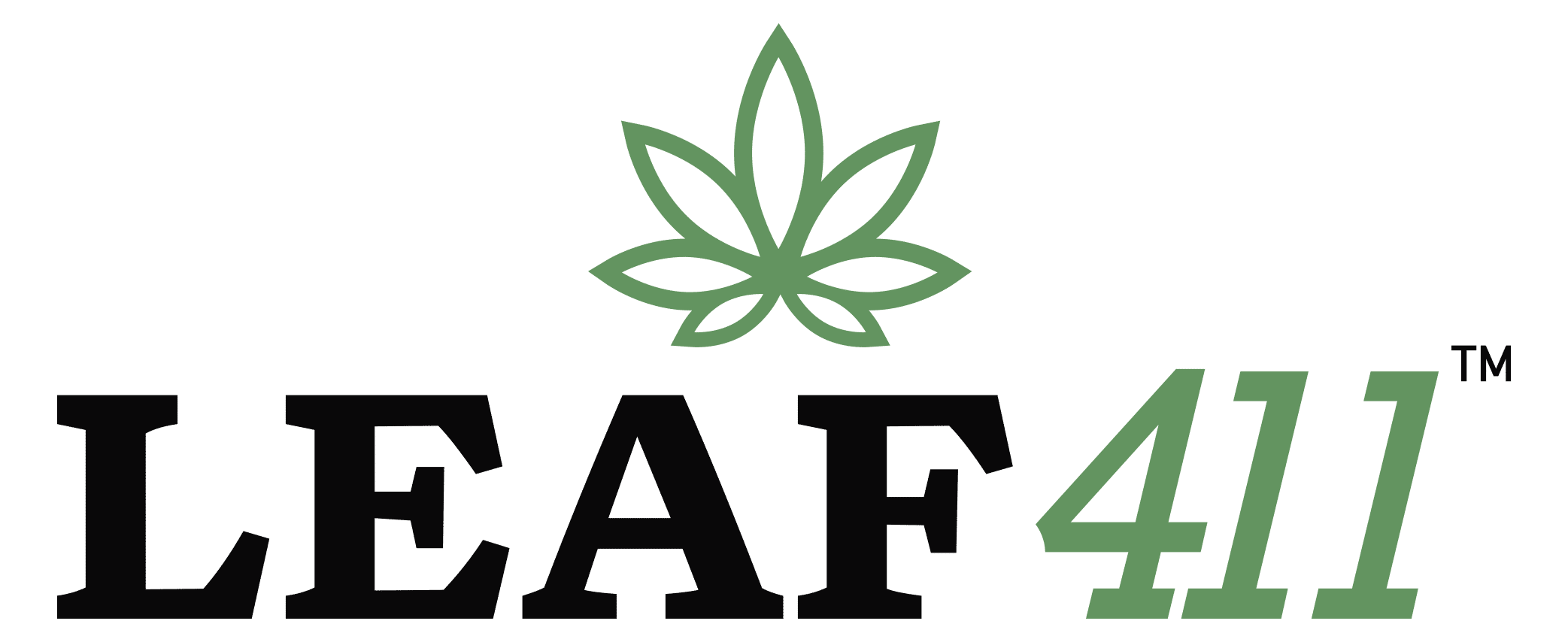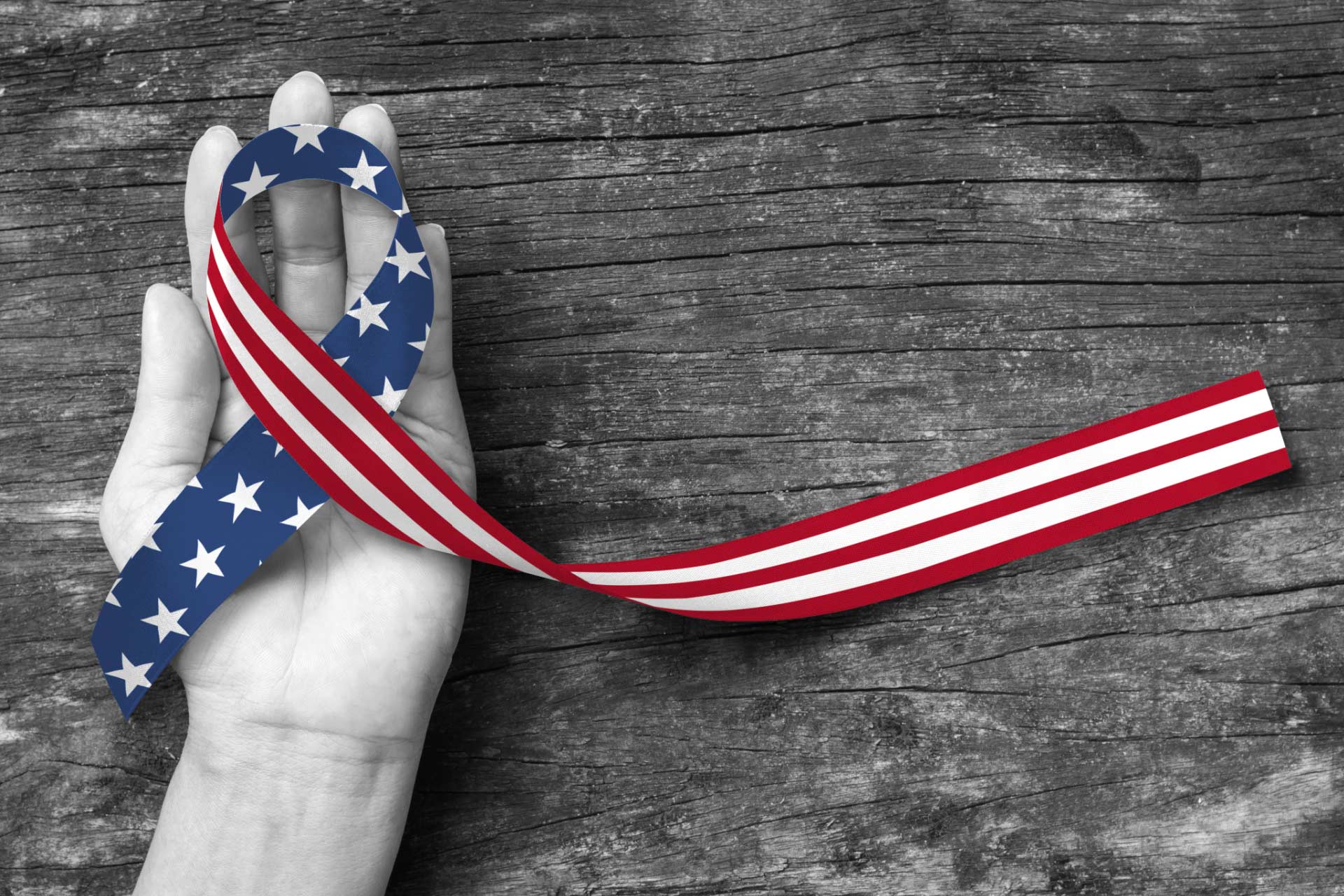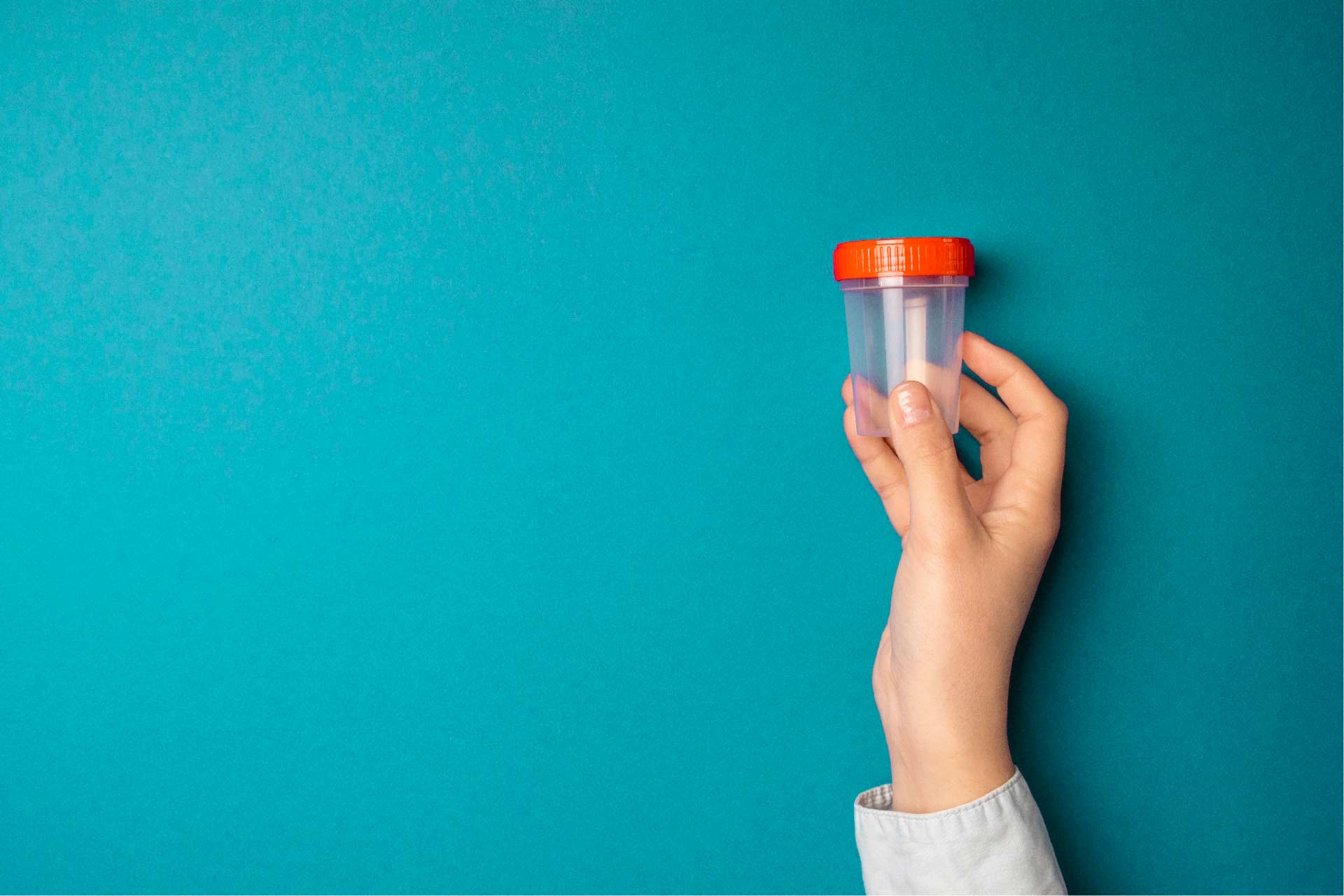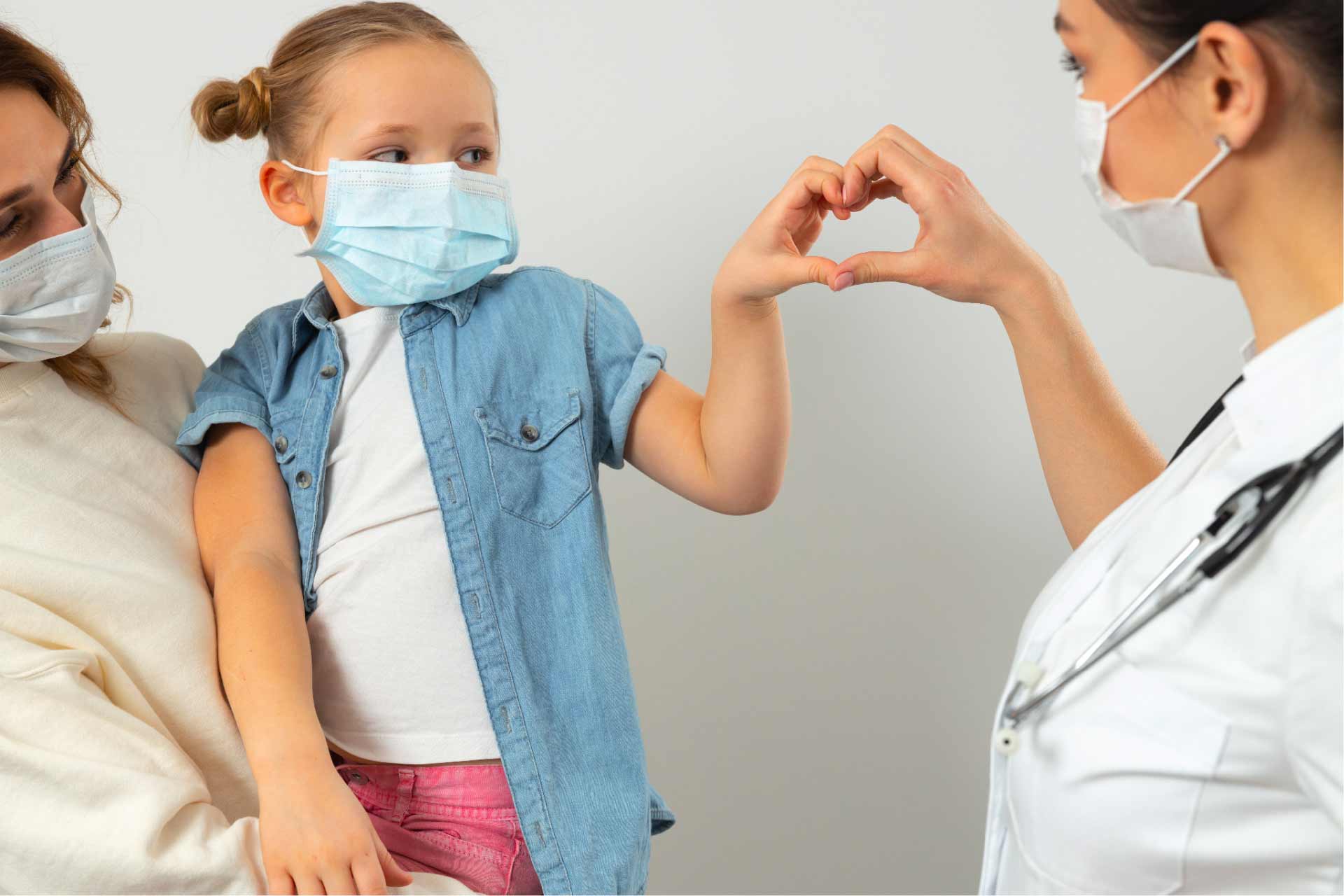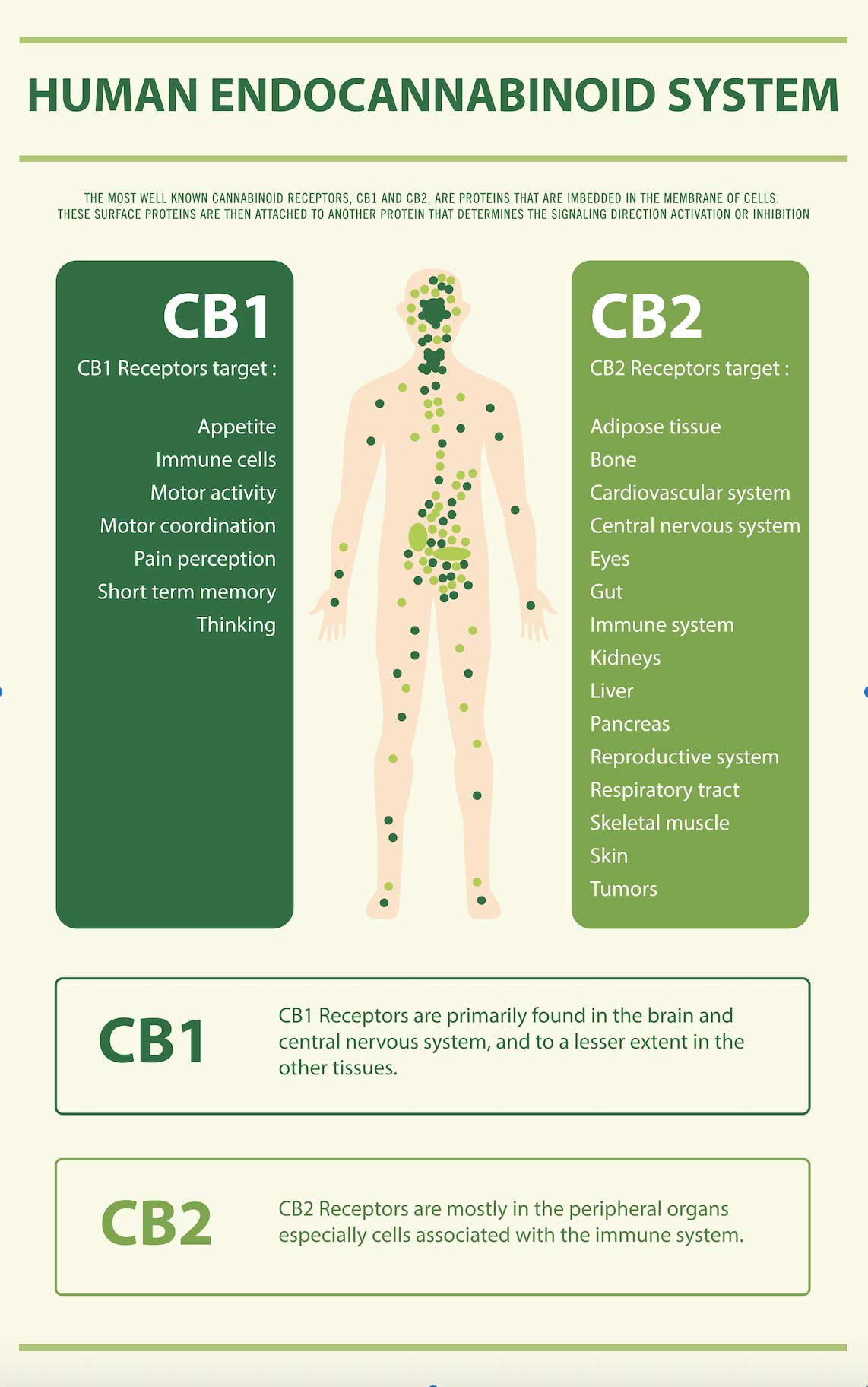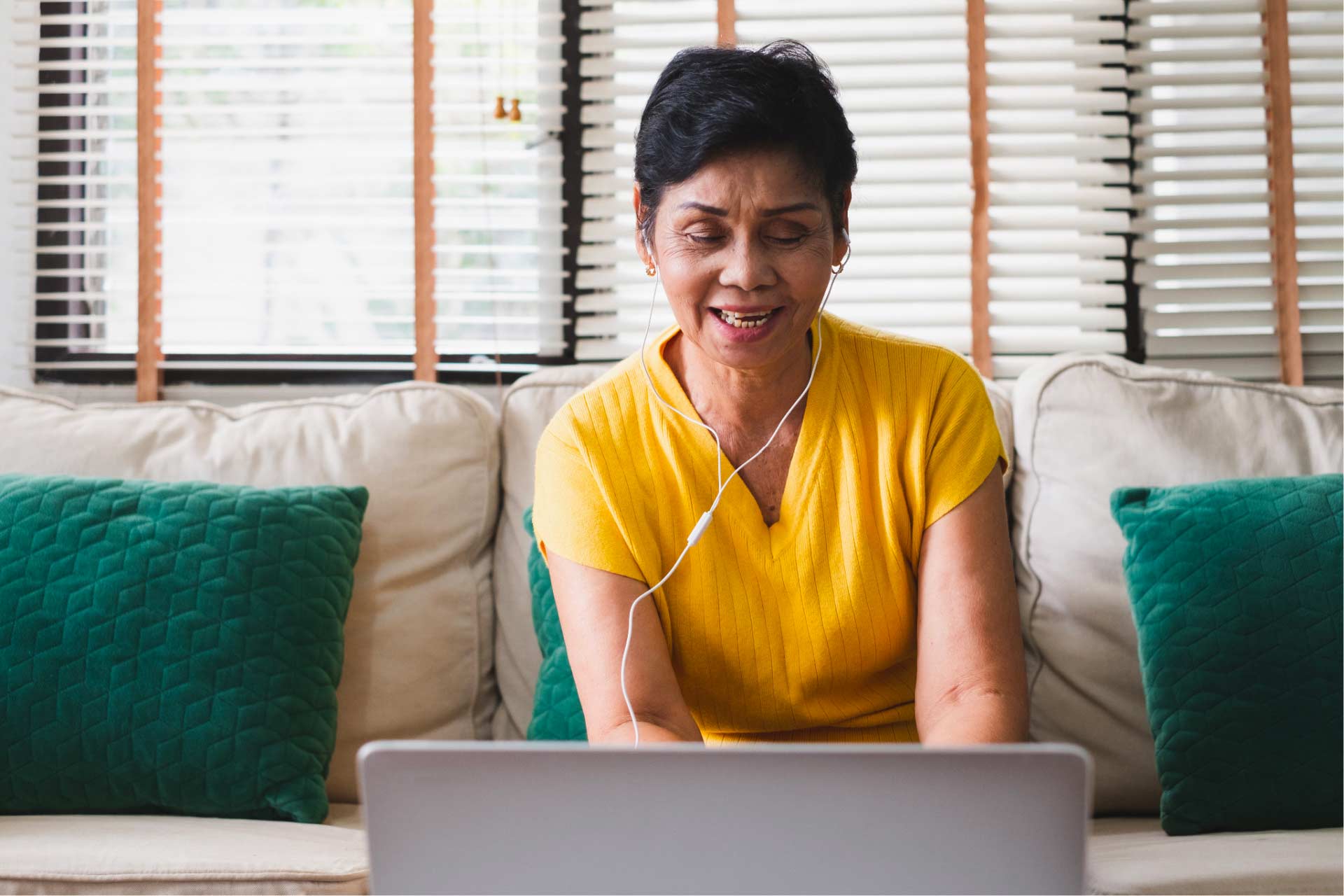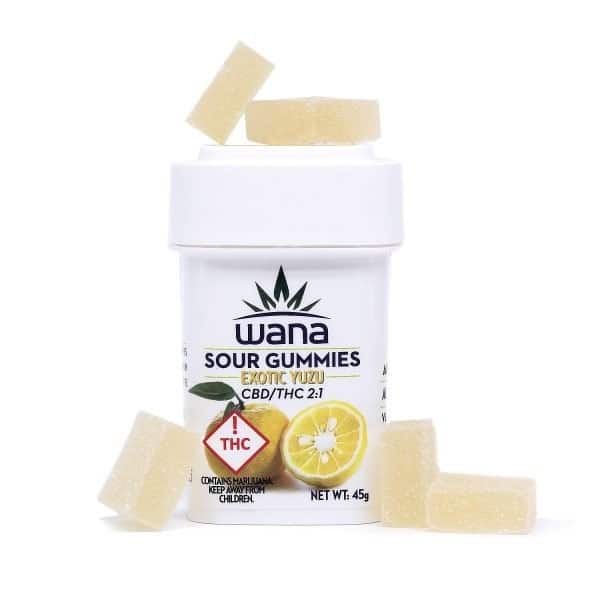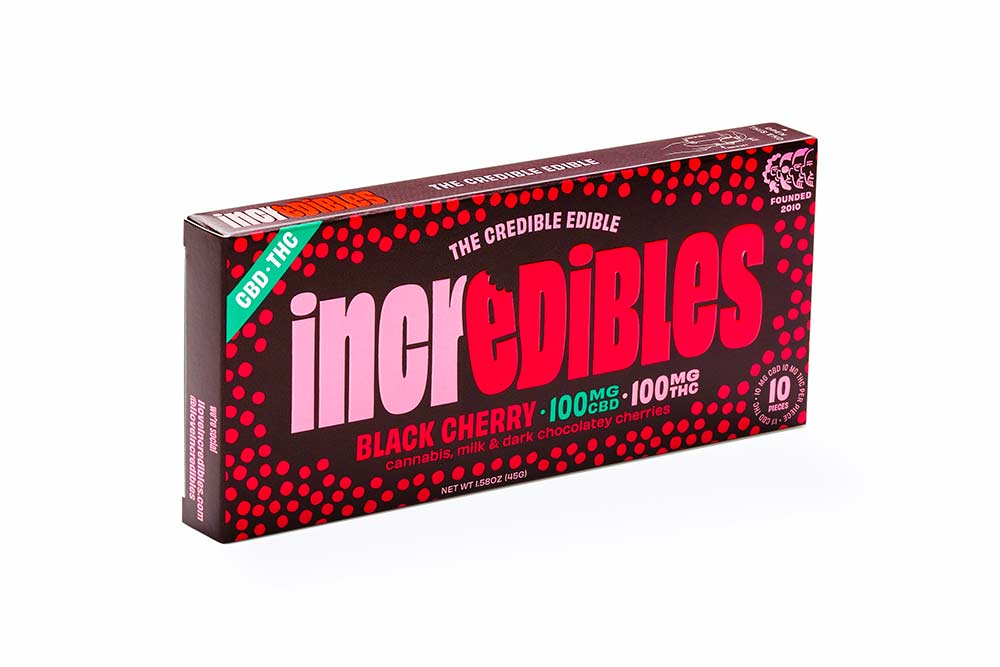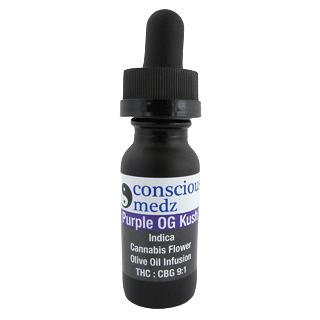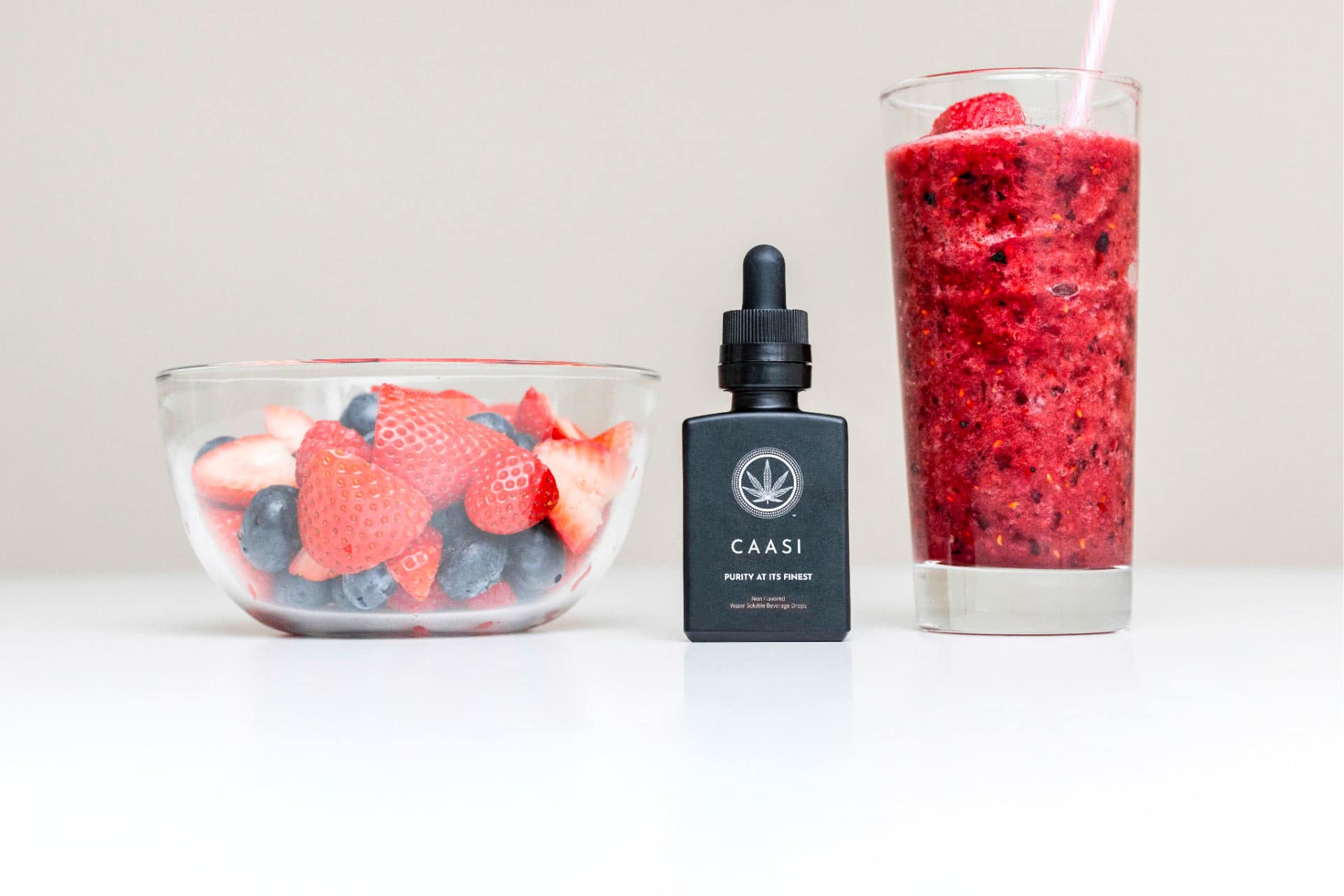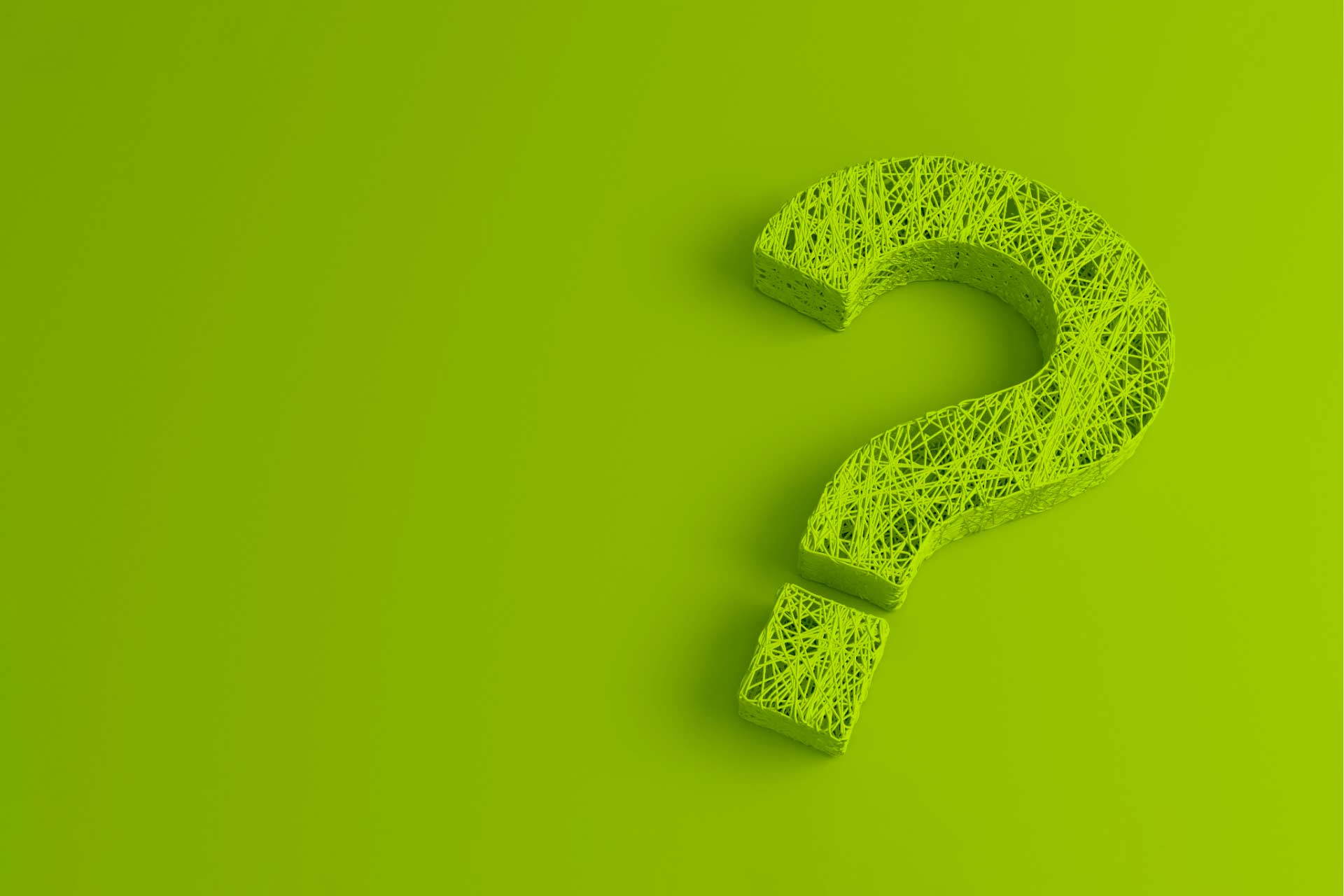Supporting Our Veterans This November
Medically reviewed by Katherine Golden, RN
Written by Denise Rustning
2020 has been an incredibly challenging year for all of us, including our military Veterans. This November, Leaf411 is putting the spotlight on those who’ve served, celebrating their stories and creating new connections through our virtual Leaf Learning Series: Supporting Veterans event scheduled for Thursday, November 19, from 4-7 pm MST.
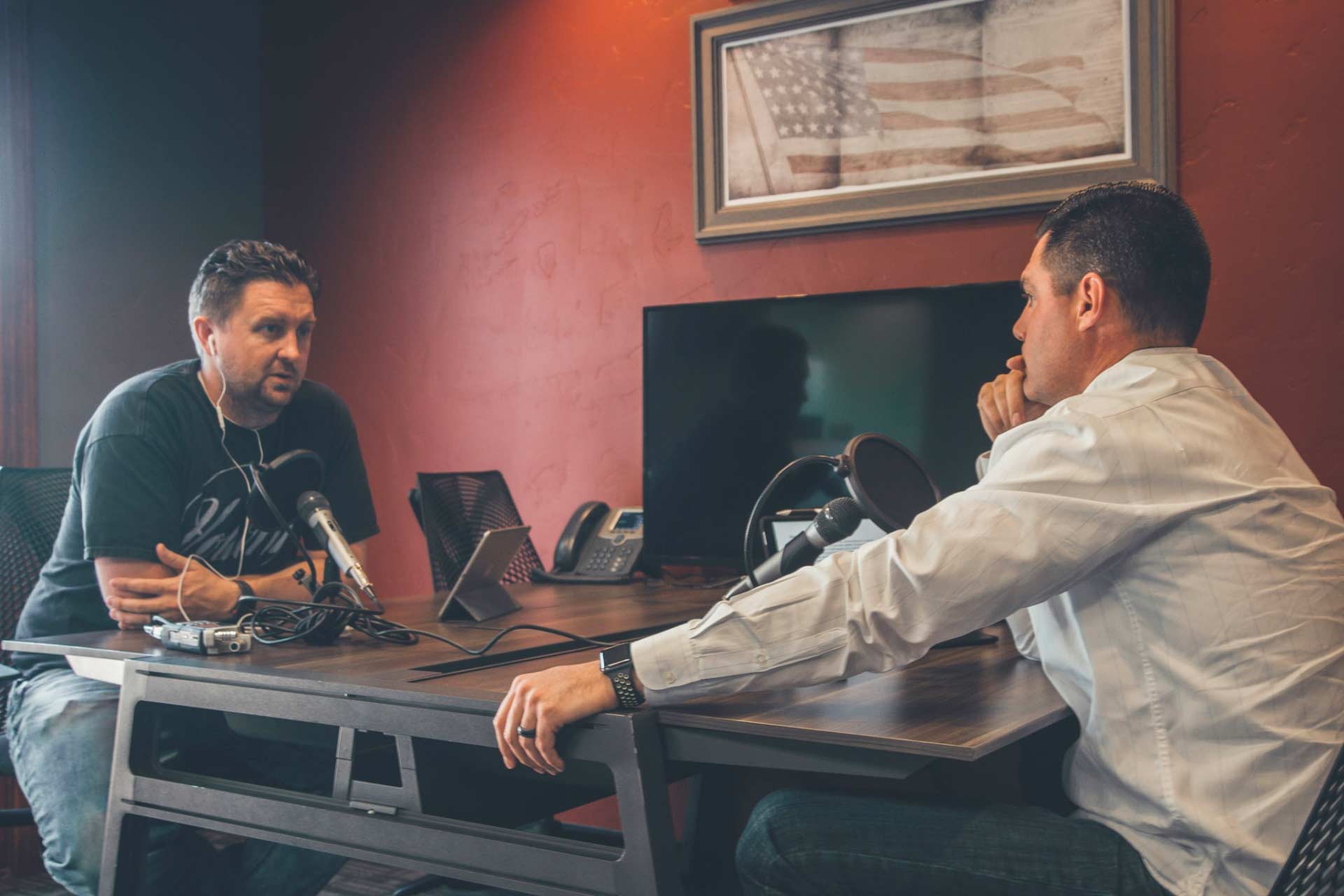
We’re also launching a new podcast, Leaf Live, as part of the educational event. Our podcasts will feature Vets sharing their stories and talking about how cannabis helped them manage conditions brought on by their call of duty. Our event will also feature these Vets and the nonprofits they founded to support fellow service members.
Keep reading to learn more about why we’re focusing on Veterans this month, as well as to learn about the nonprofits we’re partnering with for our interactive learning series event.
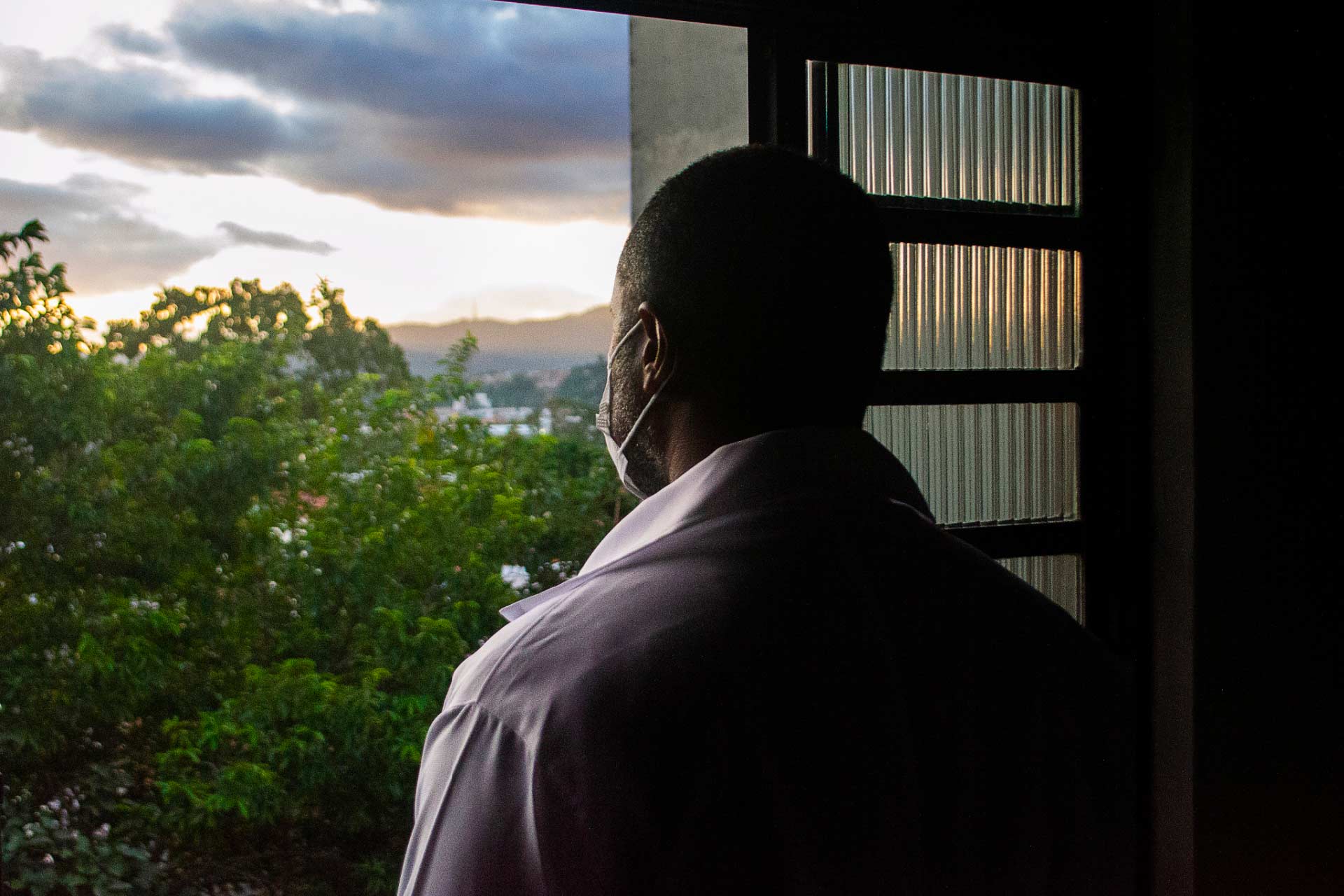
2020 Has Been a Difficult Year for Our Veterans
Pandemic-related shutdowns and social distancing restrictions changed all our lives this year, but for Veterans the impact has been especially difficult.
Following military duty, many Vets have found purpose by serving as community leaders, speaking publicly about their own hardships and motivating others to overcome challenges and barriers. The majority of these outlets—meetings, presentations and in-person classes—were abruptly shut down in early 2020 as stay-at-home restrictions were quickly enacted in response to the rapidly-spreading virus. While medical experts agree that the restrictions were urgently needed to curb the spread of coronavirus, there was little discussion about how restrictions would impact communities that rely heavily on one another for connection and support.
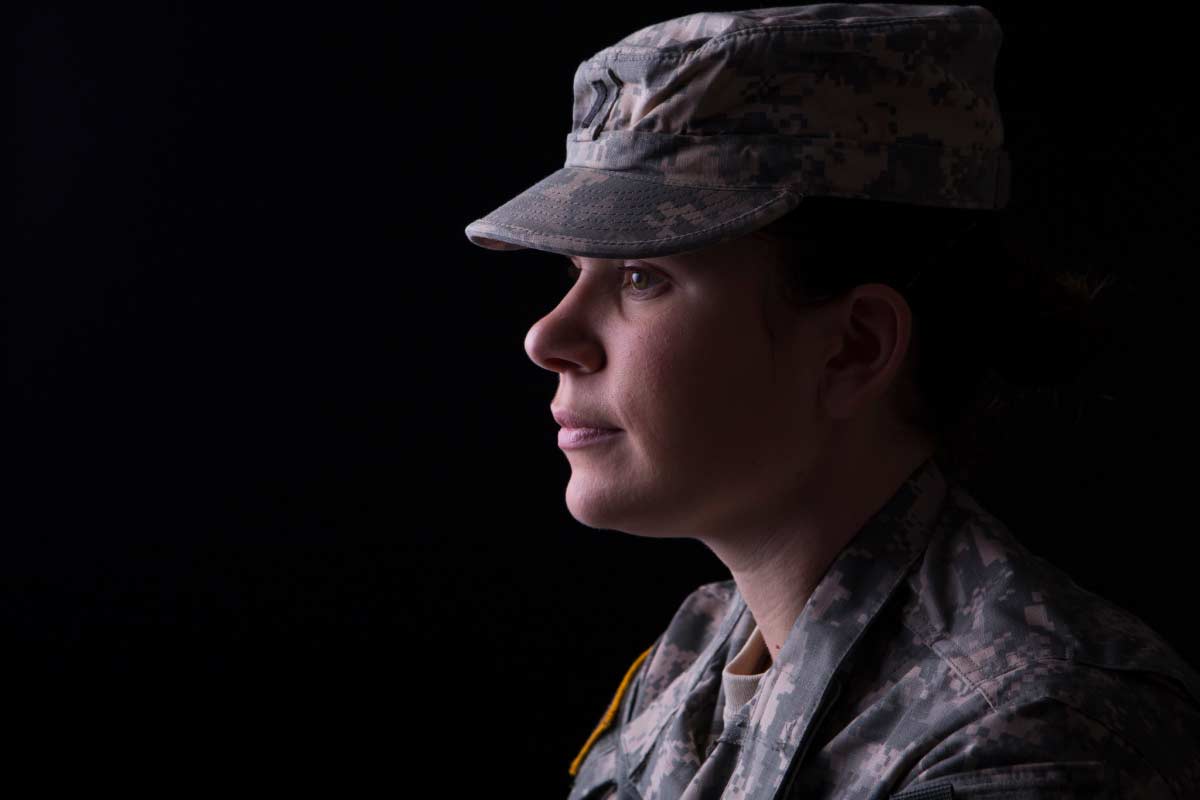
Even during normal times, Veterans are at increased risk for depression, PTSD, and other mental health concerns when compared to non-military civilians. Concerningly, suicide rates among Veterans also trend higher than the general population. The reasons behind this increased risk of mental health conditions are complex, but the realities of 2020 have only exacerbated the situation.
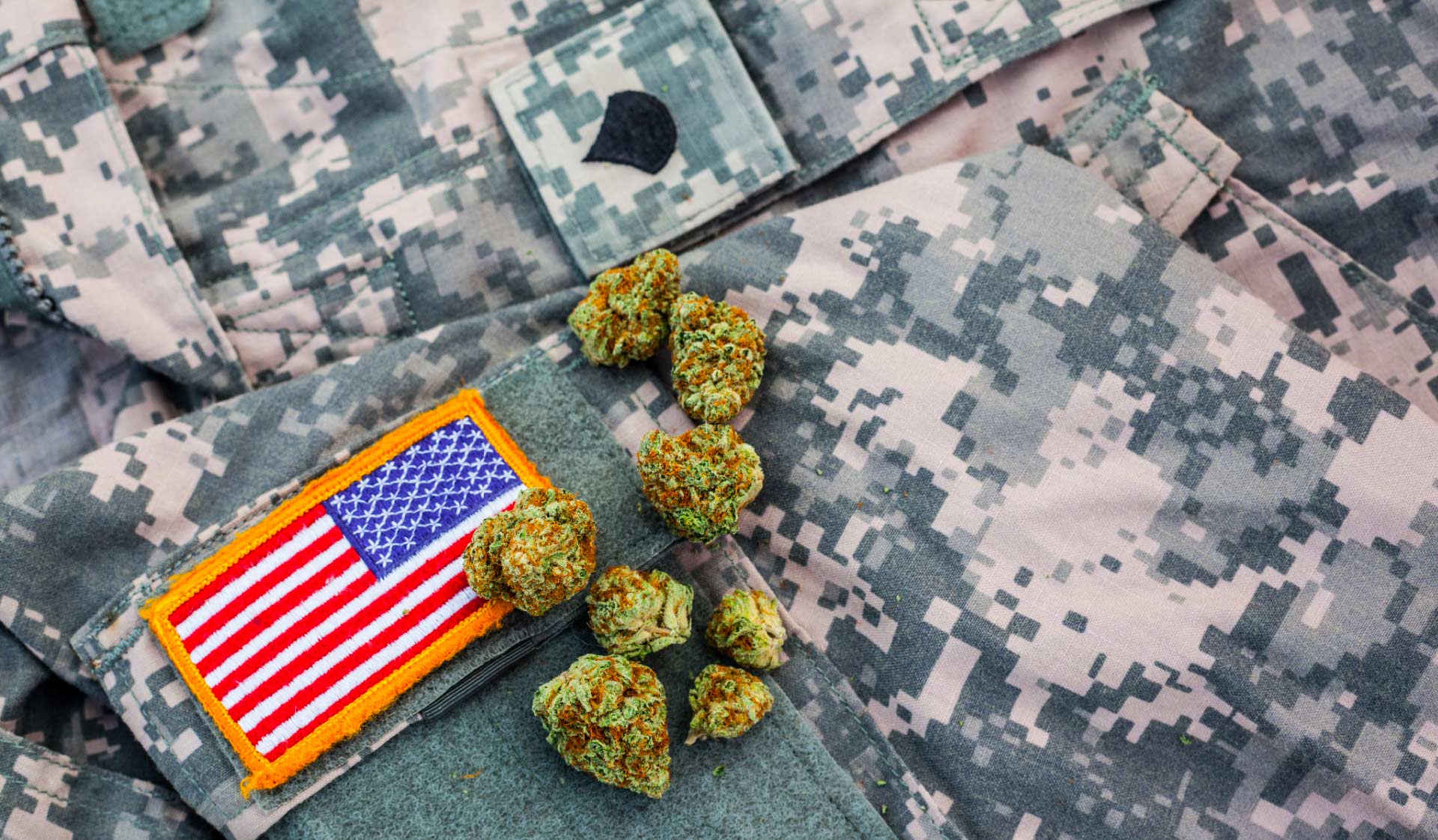
Veterans Building Community Around Cannabis
The community built around cannabis, along with the therapeutic benefits of the plant itself, have provided a lifeline for many wounded warriors during dark times. Some of these Veterans have even been inspired to form their own nonprofits to help fellow soldiers along the path of learning and healing.
As Leaf411 contemplated how to celebrate Veterans this November, we decided our best approach was to share our platform with others who are fighting for the right of all Vets to safely, legally access cannabis medicine. Our November 19, 2020, event will feature the voices of Veterans, with educational content geared toward your questions, including how cannabis use may impact VA benefits. We’ll also hear from our supporting member Medically Correct about the cannabis research they’re doing in partnership with the VA. Other Leaf411 members will also be presenting information about their products and answering your questions.
Several Veterans organizations will be on hand to share their stories and connect directly with attendees through interactive chats and a dedicated virtual Veterans Lounge. These organizations include:
- CanniMedic.org – CannaMedic.org was founded by Navy Veteran and retired Paramedic Firefighter Stanley Atkins II to bridge the gap between medical cannabis, education and patients who could benefit from cannabis or CBD.
- Balanced Veterans – Balanced Veterans advocates for alternative therapies for Veterans, including cannabis as a safe alternative to opioids and other pharmaceuticals. The organization also recognizes that community, conversation and holistic healing are all part of the path to healing and provides support to Veterans across all these areas. In addition, Balanced Veterans provides financial support to disabled Veterans in Pennsylvania to offset the cost of medical marijuana card certification.
- Veterans for Natural Rights (VNR) – VNR is a Colorado-based nonprofit serving Veterans, their families and friends. The organization is built on the premise that freedom is the birthright of every American. This freedom extends to safely, legally accessing cannabis and psychedelics as research-based treatment options for PTSD, anxiety, chronic pain and other conditions.
- Veterans Ending the Stigma (VETS) – This Ohio-based nonprofit seeks to address various stigmas that are commonly connected to Veterans, from outdated opinions about mental illness and homelessness to misconceptions about cannabis. VETS supports cannabis’s therapeutic potential for PTSD, TBI, chronic pain and other battle-related conditions.
- Helmand Valley Growers Company (HVGC) – HVGC was founded by U.S. Special Operations Veterans who understand the challenges that Veterans face as the result of time spent on the battlefield. They’re partnering with cannabis researchers to develop a Veteran-based protocol and provide evidence of the benefits of medical cannabis as an alternative to habit-forming opioids. HVGC is a fully-licensed cannabis company in the state of California, with products sold in legal dispensaries. Profits support the company’s mission to advance the science around cannabis’s potential therapeutic benefits for Veterans. HVGC also formed a separate nonprofit, Battle Brothers Foundation, to provide personal, medical and financial support to struggling Veterans.
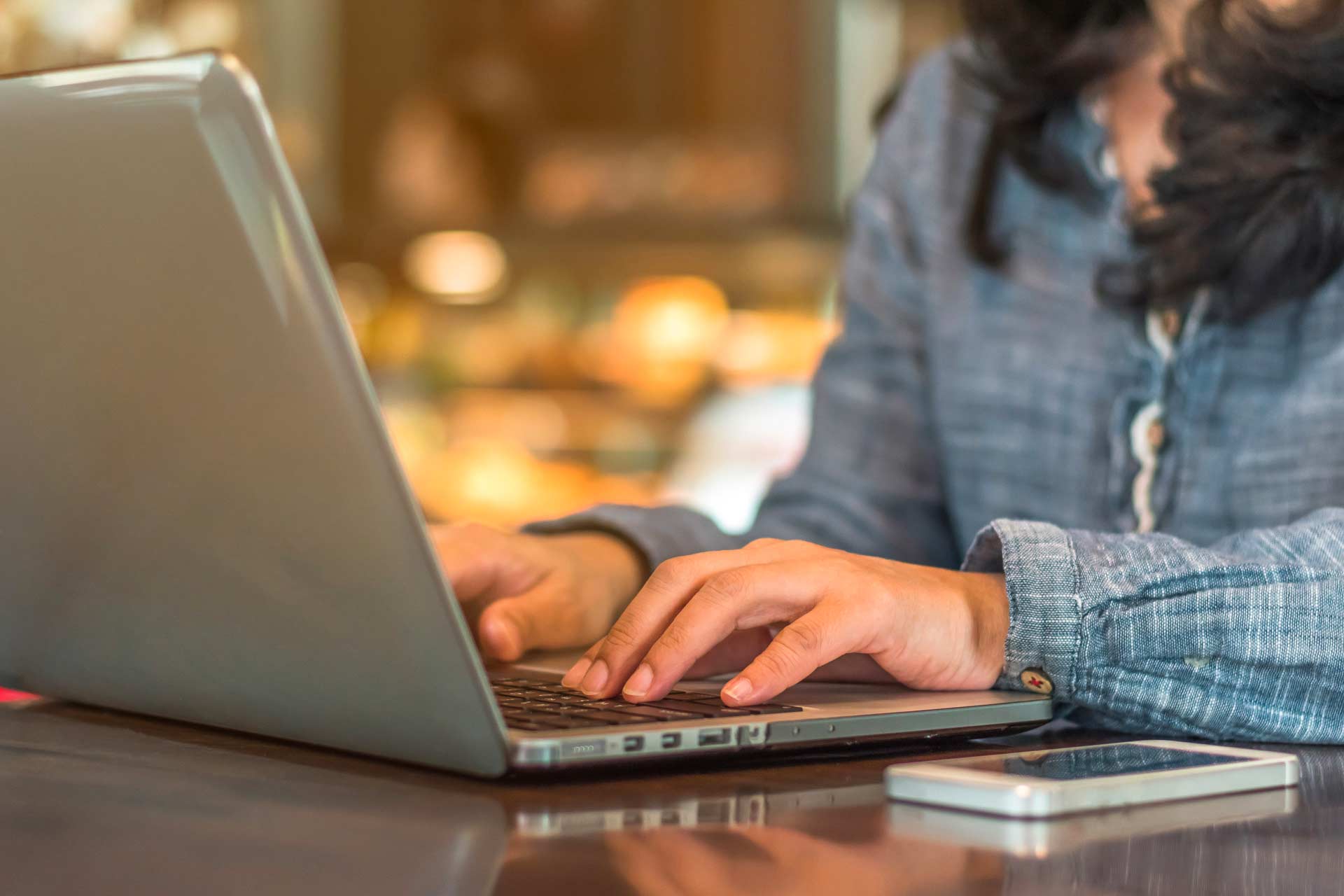
Sign Up for Our Leaf Learning Series Today!
We hope you’re able to join us for our next free Leaf Learning series event. Sign up today at this link: https://hopin.to/events/leaf-learning-series-supporting-veterans
Also, we encourage you to share this information with family members, friends and colleagues who might benefit. While our learning series event is designed for Veterans, it will also include a lot of great educational content geared toward anyone who’s interested in cannabis’s therapeutic potential!
The Leaf411 cannabis nurse hotline provides free, anonymous education and directional support to the general public about the safe use of legal cannabis. We partner with select business members who meet our rigorous standards to extend our education and outreach efforts.
Dr. Ethan Russo: Cannabis Can Be Better Yet
Note: Our Leaf411 Blog periodically shares articles from The Cannigma, a trusted resource for research-backed medical cannabis education and information. We have incredible respect for Dr. Ethan Russo’s work, and hope you find the following Cannigma article to be useful! Also, you can hear from Dr. Russo and many other cannabis health professionals at the Whole Plant Expo. For more information and discounted Leaf411 tickets, visit https://wpe20.co/leaf411
This article was originally published on The Cannigma and appears here with permission.
The cannabis that most people have access to isn’t what it could be. A big part of that is a result of the way the plant has been bred to have high THC levels for the recreational market over the years.
“For the most part, around the world, we’re still dealing with cannabis that is mostly high THC and high myrcene, which is gonna be very sedating, producing what we call colloquially couch lock, where the person feels immobilized,” Dr. Ethan Russo explains on The Cannabis Enigma podcast. “So that might be fine for the person that’s trying to get to sleep, but it’s not at all good for the person that might need to work, or study, and function well in the process, and particularly for chronic pain conditions.”
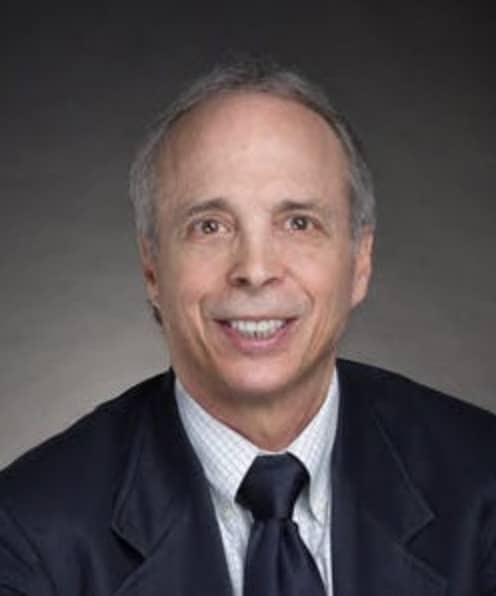
Dr. Ethan Russo
Science has made great advances in identifying what chemical properties of a given cannabis chemovar would be beneficial for various diseases and treatments, “but that’s a far cry from saying that [patients] would be able to access a chemical variety of cannabis that would be appropriate for their treatment,” Russo explains.
“We really haven’t seen the capabilities of cannabis properly harnessed at this point,” he adds.
Dr. Russo, one of the premier cannabis researchers who is responsible for the theory of clinical endocannabinoid deficiency and has done a great deal of work on proving and harnessing the entourage effect, also discussed different approaches to dosing, and why developing a tolerance can actually be a good thing.
“We really haven’t seen the capabilities of cannabis properly harnessed at this point.” (The Cannigma / Anthony Travagliante)
“The beauty of cannabis is, even though one gets accustomed to the psychoactive effects, the benefits on whatever you’re treating remain. In other words, if we have a chronic pain patient and they get benefit from using cannabis, as long as that condition is stable — it’s not getting worse — we don’t see dose escalation over time, and in fact, there are many people, who have taken cannabis therapeutically for decades that are using the same dose.”
Dr. Russo will be speaking at the Whole Plant Expo.
In the second part of the episode, Dustin McDonald of Americans for Safe Access interviews Sue Lewtin, a medical cannabis patient treating lyme disease, about her journey with the plant. Like so many others, Lewtin explains how her doctors got her started on the path of medical cannabis but that bulk of the work and learning had to be done on her own.
Edited and mixed by Michael Schaeffer Omer-Man. Produced by Michael Schaeffer Omer-Man and Matan Weil. Music by Desca. The Cannabis Enigma podcast is a co-production of The Cannigma and Americans for Safe Access.
Full transcript:
Michael Schaeffer Omer-Man: Dr. Ethan Russo, thank you so much for joining us.
Dr. Ethan Russo: Thank you.
Omer-Man: I want to dive right into it and start with a question about the theory of endocannabinoid deficiency, which you published first about a few years ago. Can you explain the theory and what led you to it and where our understanding of it stands today, four or five years later?
Dr. Russo: Well, it’s actually a lot longer, I first formulated the theory in a publication that was part of a book in 2001. But as a neurologist, I was clearly aware that many diseases that we saw in practice were related to neurotransmitter deficiencies. And although this is overly simplistic, one of the things that happens in dementia, particularly Alzheimer disease, is a deficiency of acetylcholine, the memory molecule neurotransmitter in the brain. Similarly, in Parkinson disease, we have a deficiency of dopamine function. And depression to some extent is related to possible deficiencies of serotonin, although it’s actually much more complicated. So having an awareness of the endocannabinoid system, I wondered why would there not be disorders in humans that related to what I call the clinical endocannabinoid deficiency. In thinking about it, how would that be manifest? Well, we know that the endocannabinoid system among its various functions, regulates and modulates mood, it regulates and modulates pain and many other functions. So I wondered about disorders that might be common in humans where there was a constellation of symptoms that would indicate the possibility of endocannabinoid deficiency, and the three that really came to mind were migraine, irritable bowel syndrome, and fibromyalgia.
Now, these disorders actually have a lot in common in that they’re all what are called diagnoses of exclusion, which is a way of saying that there’re no specific tests for them, you can’t scan for them, you can’t do blood tests for them, but they all involve a sort of hyper-sensitivity to pain. In the case of migraine it’s headaches, but also painful stimuli such as noise and bright light. For irritable bowel it’s an acute awareness of the gut and phenomena that normally don’t hurt are quite painful to people with that condition, and with fibromyalgia, you’ve got a generalized often increase in pain sensitivity on certain muscles or fibrous tissues may hurt to a great extent, but examining the tissue reveals no specific problem to explain it. Additionally in fibromyalgia, people are beset by anxiety and depression, and especially sleep disturbance. The other thing that these three conditions have in common is that conventional medicines often work quite poorly in treating them, whereas many of the people who have them gain a lot of benefit from treatment with cannabis. Given that the cannabis usually contains THC, it indicates that perhaps the THC is replacing endocannabinoids that are deficient in these disorders. So that’s the basic outline of the idea behind the theory, which has been corroborated subsequently, and we can talk about that.
Omer-Man: Yeah, I wanted to ask about what work has been done on that since I interviewed Dr. Adi Aran about a year ago, and he mentioned that in his studies on cannabis and CBD with autistic children, that he was looking at the possibility of whether an endocannabinoid deficiency or a mis-function was playing a role there.
Dr. Russo: Sure.
Omer-Man: Are there other areas where that kind of work is taking place?
Dr. Russo: Right. So I published an article on the subject in 2004 in more detail than the first publication in 2001. One of the things I propose there would be doing a study in which people had a lumbar puncture, spinal tap, to look at the cerebral spinal fluid that surrounds the spinal cord and the brain, and to measure endocannabinoid levels directly. But I’ve realized that doing such a study at least in my country, wouldn’t get through an Institutional Review Board or Ethics Committee. But subsequently in 2008 in Italy, Sarchielli et al, were able to do that exact study. And they showed a remarkable difference with low anandamide levels in people with migraine, as compared to control patients that didn’t have a diagnosis of migraine. So this was the first objective proof of the existence of a clinical endocannabinoid deficiency. But subsequently, there’ve been a lot of corroboratory studies including autism, as you mentioned, being related to this phenomenon. Also a very interesting study done by Matthew Hill et al, looking at people who were exposed to the 911 tragedy after September 11th, 2001.
And there were two groups, there were people that were involved in those events, who had manifestations of post-traumatic stress, and then people who were there, but didn’t end up with diagnosis of post-traumatic stress, and when they compared endocannabinoid function between the two, there were again remarkable statistically significant differences. And then, there’ve been genetic studies that show, in some instances, a difference in the cannabinoid receptors in people that might have one of these disorders, but there certainly is a lot of corroboration at this point, some years later, for this concept, and it’s been cited a couple of hundred times in the literature, sometimes mentioned as a theory, but sometimes with supporting data.
Omer-Man: You mentioned the receptors. I was gonna ask if is it mostly surrounding the levels of endocannabinoids, or also the availability of the receptors?
Dr. Russo: Well, it could be either. And to explain that, I would discuss what we call endocannabinoid tone, and that would be a function of three different things: The numbers of receptors and their activity level, we can have receptors that are active or inactive, the levels of the endocannabinoids themselves, particularly anandamide and 2-arachidonylglycerol, and third would be the activity of the enzymes that produce them and break them down. So endocannabinoid tone would be affected by changes in any of those three areas. The unfortunate thing is it’s not simple to test these things. As I mentioned, a lumbar puncture is an invasive procedure, and we can’t routinely do these just to figure out someone’s endocannabinoid levels. A blood test could be done, but there’re problems with that. Anandamide breaks down extremely rapidly in the body, and so if you’re taking a blood sample, it’s gotta be put on liquid nitrogen immediately and transported to a lab that can properly do the studies. The second problem is the levels of the endocannabinoids in the serum may or may not reflect the activity in the brain, so there’re times when they run in parallel, but other times when there are divergences between one and the other. So I mean the lovely thing in the future would be some kind of non-invasive scan of the brain that could answer these questions for us.
Omer-Man: And if we were to get there, assuming we will get there, and with the understanding that everybody’s endocannabinoid system functions slightly differently with these types of variations, and with another assumption that we understand how different diseases or conditions are correlated with those, how far are we from being able to point to specific cannabis chemovars, or that could be particularly beneficial for those conditions?
Dr. Russo: Well, the problem right now is with availability. What we’ve got is a situation where, for the most part, around the world, we’re still dealing with cannabis that is mostly high THC and high myrcene, which is gonna be very sedating, producing what we call colloquially couch lock, where the person feels immobilized. So that might be fine for the person that’s trying to get to sleep, but it’s not at all good for the person that might need to work, or study, and function well in the process, and particularly for chronic pain conditions. We would really benefit from having better profiles that would have less myrcene, more balance between THC and CBD, which is going to decrease the side effect profile and also have a beneficial profile of terpenoids that, again, may reduce associated adverse events and possibly help with other parameters, whether they be inflammation or a mood. So, in a given instance, I feel I have a good idea of what a person might benefit from, but that’s a far cry from saying that they would be able to access a team of our chemical variety of cannabis that would be appropriate for their treatment.
Omer-Man: You mentioned the different effects of different chemovars of different strains, and I wanna jump to the plant side of things for a minute. In much of the cannabis world, recreational, medical alike, they use these terms indica and sativa to sort of describe uplifting and more sedative of cannabis. And we know that those terms are generally not used correctly, and yet they’re everywhere, if they’re even real terms. How did that happen, and what should we be using… What terms should we be using to describe these different effects and types?
Dr. Russo: Sure. We’ll need a little history there to explain this. So, cannabis sativa, cultivated cannabis is a name that’s been in use for hundreds of years. Usually Linnaeus gets credit for it, but it was used for 200 or 300 years before him. So he was… His accession, what he was describing in his first books about this, was European hemp. So this is a tall plant, with narrow leaflets. A generation later, Lamarck in France, described what he thought was a different species, called cannabis indica. So this was a sample from India, was a bushier plant, but also with narrow leaflets. And that doesn’t resemble at all today what most people think of as indica, which is more likely gonna be a plant of Afghan genetics, which is only about a meter in height and has very broad leaflets, with a very pronounced sawtooth appearance to the leaflet edge.
So at one time, there could be chemical differences between these different types of cannabis, but they all interbreed and most people feel that cannabis is one very plastic species. What we should be dealing with is the chemical composition of the material and that can only come with an analysis that can’t be deciphered based on what the plant looks like, how tall it is, whether the leaflets are narrow, or broad or any of those criteria. We have to know what’s in it, what are the predominant cannabinoids and terpenoids, and then we’d have a good idea of what to expect in terms of results or effects when people use that chemovar. So I do prefer the term chemical variety or chemovar. Technically, there is no such thing as strains in cannabis. There are strains of bacteria and strains of viruses, but we use different terminology for plants and particularly for cannabis.
Omer-Man: And of the tools available to people today, in a practical sense, somebody walks into a dispensary and in some states you have access to certificates of analysis that give you the terpenes and different cannabinoid levels, but otherwise, you’re stuck with this paradigm that, as you said, it doesn’t really mean anything.
Dr. Russo: Correct. So yeah, in the olden days, what was needed was a personal bioassay. If somebody tried the material, if they liked it, they bought it. But this is 2020. My personal bias is that at point of sale, every consumer has the right and should have available a certificate of analysis that not only includes the cannabinoid and terpenoid profiles, but also safety parameters, so that they can know that the material wasn’t laden with pesticides, didn’t have heavy metals in it, was bacteriologically safe, and all those good things.
Omer-Man: Let’s talk about the entourage effect.
Dr. Russo: Sure.
Omer-Man: It’s one of the more astounding aspects of cannabis. It lends itself to this idea that cannabis is different than most other plants that medicines are derived from in that you’re not looking at one active ingredient, but numerous compounds working in concert. Now, I’ve heard some argue that there’s not actually any clinical evidence of the entourage effect, and that the effects we attribute to it could be a minor cannabinoid or terpene that just hasn’t yet been identified, and other researchers like Dedi Meiri are looking at isolating the specific combinations of compounds in the plant in order to achieve specific effects. Where did this idea come from and are we thinking about it accurately?
Dr. Russo: Okay. Well, this originated with Professor Mechoulam and Ben-Shabat in 1998. And they were initially discussing the entourage effect in relation to endocannabinoids, and it was the idea that the big players, anandamide and 2-arachidonylglycerol seemed to be synergized by the presence of related compounds, which on their own seemingly were inactive, or very poorly active. They gave an example of PEA, Palmitoylethanolamide markedly boosting anti-inflammatory effects if I remember correctly. The next year, in 1999, they mentioned that the same thing could apply to botanical synergy. The idea that plant extracts were more effective than single ingredients derived from plants, so very much the situation in cannabis. I certainly… That idea resonated with me and a lot of my subsequent work was an effort to try and show these relationships and how synergy, a boosting of effect would work. Now, people that say that there’s no clinical evidence of this are wrong, I’m afraid.
We’ve got a very good illustration in the Sativex development program. Back about 2005, a study was done looking at three arms in patients with chronic cancer pain. There was placebo, there was a high THC extract and there was a THC extract combined with a high CBD extract, what’s now known as Sativex. So what happened was after a couple of weeks of treatment, there wasn’t any real difference between the placebo and the high THC extract with respect to pain control in these cancer patients. However, the Sativex treatment group was statistically significantly improved over the other two, and the only difference was the presence of cannabidiol in Sativex as compared to the high THC extract. So that was clearly a demonstration of herbal synergy or the entourage effect at work. Additionally, it has been difficult to get good research on this. In the United States, people who are doing studies with cannabis are required to do any kind of randomized control trial, it must be with material from the National Institute on Drug Abuse, which is stored for a long time and has been demonstrated to be almost devoid of terpenoid content. So it’s hard to show entourage effects if you don’t have the right components in the material.
But currently underway at Johns Hopkins University in Baltimore, I’m doing this study with Ryan Vandrey in which we’re using naturally derived THC with specific naturally-derived terpenoids in patients, randomized control trial, to try and show synergy of these ingredients. One of the first studies is almost done and the preliminary results definitely show an effect that would be considered an entourage effect, and there’ll be a couple more and hopefully many more studies of a similar nature after that. So what we’re attempting to do is sort of a deconstruction, reconstruction, to show that having these other components in cannabis with THC, with CBD, really can make a difference in clinical effects.
Omer-Man: I believe in Taming THC, you mentioned the terpenes are of pharmacological interest at concentrations of 0.05% and higher.
Dr. Russo: Right.
Omer-Man: What… How many are we talking about in the average chemovar… What people are getting?
Dr. Russo: Sure. Yeah, great question. Well, in the United States, it’s really primarily myrcene in that people are finding certain places, like in California, there might be chemovars that are high in terpinolene, but it’s a little unusual to see a limonene predominant variety or a linalool predominant variety. In extracts, we see a lot of caryophyllene, which is a helpful compound, but we’re not seeing the variety that really cannabis is capable of producing. So part of this is a problem with breeding practices. The market is very much related to high THC chemovars. It is true that the recreational market really dwarfs the medical market, but we really haven’t seen the capabilities of cannabis properly harnessed at this point.
Omer-Man: If I understood what you said about your study, you’re adding terpenoids not naturally in the extract that you’re working with in order to create these combinations?
Dr. Russo: Yeah. Let me be frank…
Omer-Man: Is that something that can be…
Dr. Russo: We wouldn’t be able to show anything useful using the NIDA cannabis in this instance, because there’s no… There’s very little terpenoid content. Let me mention something else. For decades, it was in the interest of the US Federal Government to demonstrate falsely that the pharmacology of cannabis was all about THC. When synthetic THC is Marinol was FDA approved in 1985 for treatment of nausea associated with chemotherapy. They thought, again, incorrectly, that that would obviate the need for medicinal forms of cannabis, but that never happened. THC on its own is a lousy drug. It’s very poorly tolerated, it’s very disorienting. It tends to produce dysphoria rather than euphoria, and anyone who has tried both will tell you that it’s totally different to the effects that people get from cannabis. So there have also been a couple of recent studies that purported to negate the idea of the entourage effect, but they were quite limited in their scope. They were really just looking at a few terpenoids and whether they had activity at the cannabinoid receptors, but most terpenoids are going to work through other mechanisms entirely.
So, they really didn’t negate the entourage effect, they just demonstrated that some of them didn’t work on the cannabinoid receptors, but we knew that 15 years ago. In relation, or a question you asked earlier, there have been over 200 terpenoids that have been found in cannabis, none unique to cannabis at this point, but they’re perhaps 17 that are found routinely on analysis. But again, there are just a few that are seen to be predominant and that’s unfortunate.
Omer-Man: The National Institute of Drug Abuse recently put out a call for proposals on an idea of setting a standard dose of THC in cannabis products. Now, obviously, they have a very different point of departure, mainly looking at abuse and studying it, but could there be a potential benefit either for research or for treatment, in some sort of standard dose for cannabis, be it for THC or something else? And is that even possible considering everything we’ve already discussed?
Dr. Russo: Sure, but it’s a very difficult thing. There’s a tremendous difference in the pharmacokinetics of different routes of administration. What I mean by that is, when someone vaporizes or smokes cannabis, they have an almost immediate effect, a very sharp up upswing in the amount in the serum and in the brain on a rapid down swing. And this is totally different than what happens when it’s taken orally, where the amount in the blood may stay very low over time, but the person might be very high, so the serum levels don’t reflect what’s going on in the brain. So, there’s a difference between 10 milligrams of THC that’s inhaled, which is actually a very big dose if someone’s actually getting that much and 10 milligrams taken orally, which again is gonna affect some people who don’t have tolerance quite markedly, but the time contours are totally different. It also depends on endocannabinoid tone, patients’ prior experience, do they have tolerance to the material or not? So a nice concept, but very hard to put into practical effect. I’m not saying it shouldn’t be done, I’m just saying that it’s a real challenge to be able to come up with useful data.
Omer-Man: Without that data, we often see the recommendation to start low and go slow.
Dr. Russo: Right.
Omer-Man: If I’m not mistaken, I remember seeing in one of your papers, slightly different version which was, start low, go slow and stay low. Can you elaborate on why and how low?
Dr. Russo: Sure. I mean, if we’re gonna give general rules, 2.5 milligrams of THC is gonna be a threshold dose, some people will feel it, some will not. 5 milligrams is gonna be a moderate dose that most people will feel certainly and 10 milligrams would be too much for the person who has no prior experience or tolerance. In general, I like to see people take a total of somewhere between 15 and 30 milligrams of THC a day on the outside, the exception being patients with cancer that might require high doses for primary treatment of a tumor. But beyond that level, 30 milligrams a day, what we know from prior clinical studies is, you definitely increase the side effect profile, but you rarely increase the benefit on treating whatever the target symptom might be. In other words, there’s no guarantee with a higher dose, you’re gonna treat pain more effectively, but you certainly, you’re gonna be contributing to the side effects. And again, this is all subject to variation depending on other components that may or may not be in the cannabis. So if there’s a good amount of CBD present, it increases the latitude that you have in THC dosing. You can increase what’s called the therapeutic index towards being able to take more THC with less problems.
Omer-Man: And what about with high CBD, chemovars, and when you’re actually looking to CBD as the primary active ingredient, do do you need the same caution, let’s say?
Dr. Russo: No, not as much. CBD is not as potent on a milligram per milligram basis. So if we’re talking about pure CBD, we usually need doses that are much higher. For acute anxiety, it’s a few hundred milligrams, for treatment of psychosis it’s somewhere around 800 milligrams a day. For treatment of severe epilepsy syndrome such as Dravet and Lennox-Gastaut, it’s 20 milligrams per kilogram per day of a pure substance, but interestingly, when this has been analyzed, it’s been shown that CBD doses can be effective at about 20% of that level if there are other components available. And I’m fond of saying that there’s nothing that CBD does that won’t be enhanced by having at least a tiny amount of THC present as well. And additionally, it would apply to terpenoid content, can certainly add to the adjunctive value. For instance, if we’re treating anxiety, it’s very helpful, they have some of the terpenoid linalool up board, ’cause it’s a very prominent potent agent in treating anxiety without being overtly sedating and without being addictive at all.
Omer-Man: You mentioned in one of your previous answers, tolerance and whether somebody has it, specifically toward THC. How does that work? And when you develop a tolerance to what people refer to as the euphoric effects or high of THC, does it lose its other… Do you develop a tolerance to the most of the therapeutic effects as well?
Dr. Russo: Yeah, that’s a great question, I’m glad you asked. Yeah, one of the beauties of cannabis as a therapeutic agent is, yes, you can become accustomed of the psychoactive effects and work through them and with careful dose escalation over time, maybe two weeks or so, people can get quite accustomed to even higher doses of THC. What we want them to do is to use the lowest dose that treat symptom without… Symptoms, without producing intoxication. But the beauty of cannabis is, even though one gets accustomed to the psychoactive effects, benefits on whatever you’re treating remain. In other words, if we have a chronic pain patient and they get benefit from using cannabis, as long as that condition is stable, it’s not getting worse. We don’t see dose escalation over time, and in fact, there are many people, who have taken cannabis therapeutically for decades that are using the same dose. So it’s quite different to what we see with opioids where often there is dose escalation, increase in side effects, dependency, craving and all those problems.
Omer-Man: I wanted to ask you what you’re working on now? You… I’ve seen your new company in the news a bit, CReDO, is that how it is pronounced?
Dr. Russo: Yes, CReDO Science. So we’ve got a variety of things, we’re what’s called Intellectual Property Holding Company, which means that we have ideas that we develop, and these will lead to products and services. And I realize that’s nebulous, but we have two diagnostics that we’re developing for diseases that have no current tests, just clinical diagnosis. We have a supplement that we’re working on. We have a novel extraction technique. We’re also doing formulation work for different companies to help them with what we hope will be ideal preparations for a variety of conditions. So we’re covering a lot of territory.
Omer-Man: My last question, and I believe, you hint at it in a different interview, so I hope you can talk about it. Maybe beyond your own research, if that’s okay. Cannabinoid Hyperemesis Syndrome, it’s something that’s become… The medical establishment has become more aware of as cannabis use becomes more prevalent. Do we know if it’s related to one’s endocannabinoid system or deficiency, or is it in… Changes that take place in the body? What do we know about it today? And…
Dr. Russo: Sure.
Omer-Man: Is it something that can be treated?
Dr. Russo: Yeah, a very topical area. It is something that we’re working on and I will admit that. What we know about this condition is that it affects select individuals. What we know about the people that get it is, uniformly, they have taken high doses of high THC cannabis over a long period of time. And then they get a very unusual syndrome, there’s a period of anxiety and nausea that leads to severe nausea and vomiting with abdominal pain. Doesn’t respond well to conventional drugs, but there’s a very characteristic finding, which is, people get relief from hot showers or baths. And also may respond to application of a capsaicin ointment, that’s the active ingredient in chili peppers, that’s applied to the skin. So it’s still being researched. We have some insights into this that we hope to publish soon, but that’s about all I can say at this point.
Omer-Man: I know I said that was gonna be my last question, but I should never say it’s my last question. The other thing that I’ve seen written about your company and your research recently is the idea or the prospect of cannabis based disinfectants. Now, this is something that’s been around for decades. It was used in the mid-20th century as an antimicrobial, and we had Dr. Vincent Maida on the podcast a few months ago, who’s working on cannabinoid treatments for intractable wounds. I interviewed a dentist who’s using it for oral healthcare, and if I’m not mistaken, you are looking at it in the context of a disinfectant that could work on COVID. Why does that work or why should that work?
Dr. Russo: Well, there are many components of cannabis that have antibiotic effects on… This includes the cannabinoids and terpenoids, and it’s just a matter of finding, again, the best combinations or profiles that are gonna have the wider spectrum that could be applied in that fashion. So that is another thing that we’re working on.
Omer-Man: Okay, Dr. Russo, thank you so much for your time.
Dr. Russo: It was a pleasure, I appreciate the opportunity.
The Leaf411 Cannabis Hotline Difference
Learn what makes us unique in the world of cannabis and medicine, and what to expect when you call the hotline
Medically reviewed by Katherine Golden, RN
Written by Denise Rustning
Have you ever tried talking to your primary care physician about cannabis as an option, only to have the conversation fall flat?
This information gap is what inspired Leaf411 co-founders Katherine Golden, RN, and Jennifer Axcell to establish Leaf411 in 2019.
Today we offer a quick rundown of why stigma remains in healthcare, and share an inside look at what happens when you call the hotline.

Addressing Stigma in Healthcare
Public acceptance of cannabis is strong across nearly all age groups, and more states are voting to legalize either adult-use (recreational) or medical marijuana.
However, if you’ve ever tried bringing up cannabis with your primary care provider, then you’re likely aware that the medical field lags behind. Your provider may have refused to discuss cannabis, or may have even questioned your motives. Why is that?
Some medical professionals still treat marijuana primarily as a drug abuse issue, not as a clinically-valid treatment option. Even physicians who might support cannabis therapeutics are often censored by their employers, including doctors practicing at the VA. In addition, both physicians and nurses may be wary of losing their professional licenses if they discuss cannabis since marijuana remains classified as a Schedule I drug and is still federally illegal.
Another issue is the gap in knowledge among many providers. According to a 2017 study, less than 10% of medical schools included medical marijuana in their curricula, leaving physicians-in-training on their own to learn about cannabis therapeutics.
Fortunately, awareness of cannabis therapeutics is increasing among the medical professions, with organizations like American Cannabis Nurses Association and Radicle Health providing continuing education to healthcare professionals like our own Leaf Nurses.
Our Leaf Nurses are fully-licensed registered nurses with clinical experience who’ve completed specialized training in cannabis therapeutics.
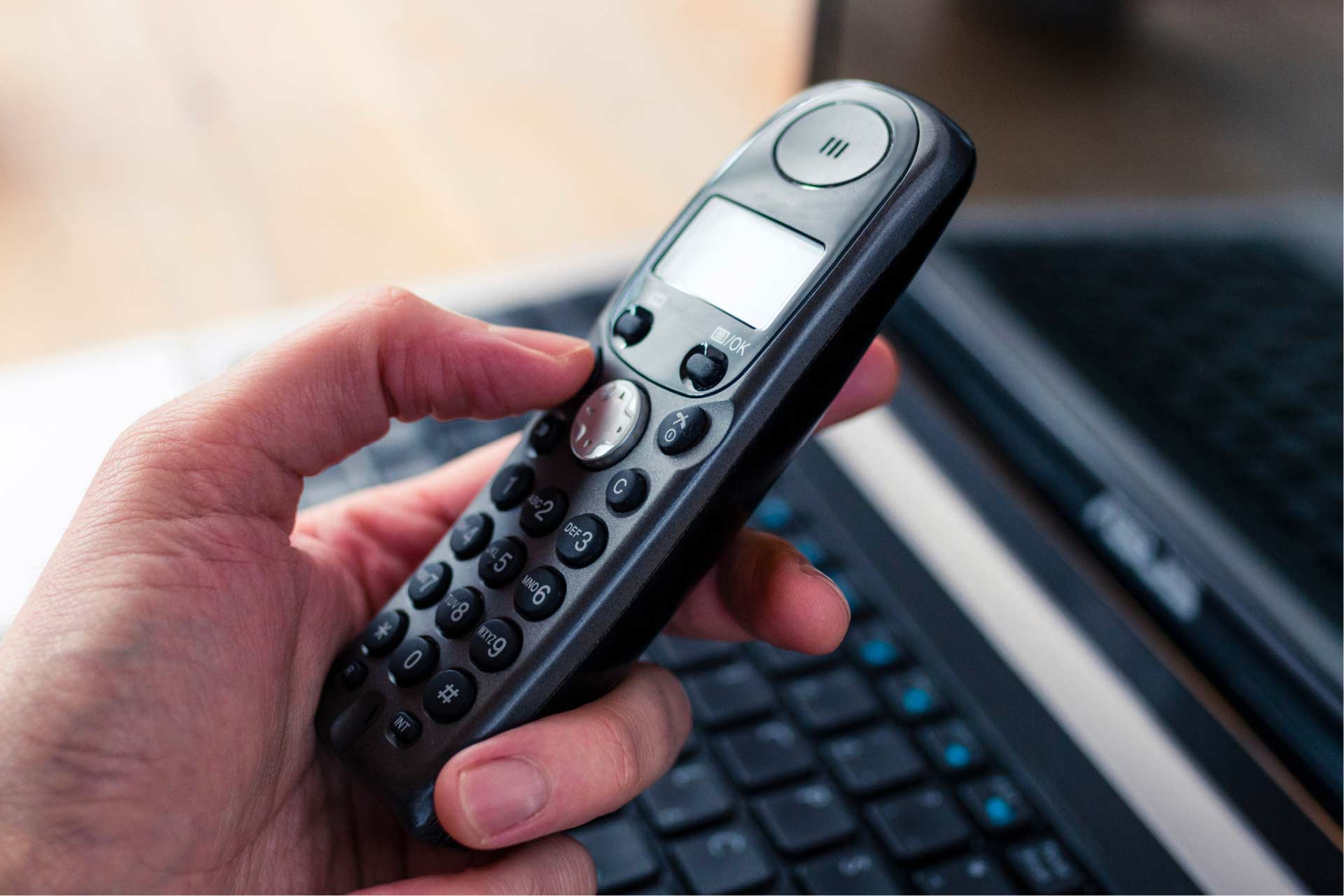
What Happens When You Call the Free Leaf411 Cannabis Nurse Hotline?
Our Leaf nurses approach calls to the hotline just as they would any other patient encounter, bringing nursing best practices into their work. This means that when you call the Leaf411 hotline, you should expect an experience similar to other telehealth encounters, though the focus is on education not diagnosis (diagnosis would be outside of our scope of practice!).
Generally, you can expect the following steps during your call:
- Background Information: While the hotline is anonymous, we gather non-identifying data (location, age, etc.) to ensure our services match caller needs. This information also helps us determine what cannabis and CBD hemp options exist based on laws in your home state. We may gather this information up-front or as part of the conversation, depending on the caller’s needs.
- Triage: Our Leaf Nurses ask a series of questions to understand your healthcare needs and goals for using CBD hemp or marijuana, whether you’re completely new to the plant or an experienced user. We’ll also ask questions about your activities of daily living to make sure that our education is tailored to your day-to-day realities.
- Your History of Marijuana Use: When considering marijuana or CBD hemp as a therapeutic tool, it’s important to factor in where you’re coming from. Are you an experienced user, or was the last time you consumed over 20 years ago? Have your past experiences been positive or negative? It’s okay if you have hesitations or concerns based on past experiences! Our Leaf Nurses are non-judgmental and provide balanced information based on your goals and preferences.
- Offering Education and Guidance: Once we have a clear sense of your healthcare needs and goals, we provide education and guidance that can save you time and money when it comes to finding the best cannabis options for pain, insomnia, or other needs. Our Leaf Nurses also understand that most callers want relief without impairment so that they can go about their daily lives.
We start with Cannabis 101 education on your endocannabinoid system, followed by general guidance on product types, routes of administration, and dosing. For example, our Leaf Nurses may suggest starting with a ratio product that contains specific amounts of THC and CBD. They also take into account any physical limitations that callers may have to recommend easy-to-use product formats, like gummies that can easily be divided into smaller doses. - Follow-Up Options: If you’re calling us at the very beginning of your cannabis journey, wondering where to start, you’re not alone! Many of our callers are new to marijuana or CBD hemp. We understand that as you begin trying different products and learn more about cannabis, additional questions may come up. While the hotline is anonymous, we do take notes as part of our nursing practice, including your phone number. That makes it easy for us if you have follow-up questions so that we can pull up those past notes and pick up right where we left off. You can also request to speak with the same Leaf Nurse you previously talked to, though we may need to schedule a call-back time based on our nurses’ schedules.
Want to hear what it sounds like to call the hotline? Colorado Public Radio’s On Something podcast gave us a test call, and also talks to Katherine about the hotline’s work.

How the Leaf411 Hotline is Different than Other Resources
The Leaf411 hotline is unique in that we’re the only free RN-staffed cannabis health resource in the U.S. (at least that we’re aware of!).
There are many free online resources for general learning, including our own Leaf Library. But when it comes to questions specific to you–your health goals and needs–those are best addressed by a trained clinician, not someone without a medical background.
Other cannabis clinicians provide individualized education, but they charge patients for the service. However, we decided to do things differently at Leaf411, to ensure that anyone and everyone would have access to the same professional and trustworthy cannabis information.
Your Calls Demonstrate the Need for Clinically-Backed Cannabis Education
Whenever you choose the non-profit Leaf411 hotline as a resource, you’re supporting the need for balanced, unbiased clinically-backed education on marijuana and CBD hemp. We point to hotline’s overall call volume as proof when we talk to grantmakers, industry or public health partners.
We know some people would like to support the non-profit hotline in other ways as well. Sign up for our newsletter below to stay up-to-date on upcoming fundraising initiatives, as well as our upcoming Leaf Learning: Get the 411 series events!
Cannabis, CBD Hemp and Workplace Drug Testing
Medically reviewed by Katherine Golden, RN
Written by Denise Rustning
Thirty-three states have legalized medical marijuana, with 11 of those states also legalizing adult-use (recreational) marijuana as of October 2020. Come November, those numbers are likely to grow as five additional states vote on either medical or adult-use cannabis initiatives.
But just because marijuana is legal in your state doesn’t mean that you’re protected, should you fail a workplace drug test.
Also, the proliferation of CBD hemp products has raised questions about whether the minimal, non-intoxicating amounts of THC contained in full-spectrum CBD hemp might trigger a positive drug test result.
We hear these concerns frequently enough on the hotline that we decided to take a closer look at current workplace drug testing protocols to help you choose the best course of action for your own use of CBD hemp or legal marijuana containing higher amounts of THC.

Why Does Cannabis Stay in Your System Longer than Other Drugs?
Many people use cannabis to help manage health conditions, boost wellness or simply to unwind after a stressful day. Cannabis’s intoxicating effects generally fade away after 2-8 hours, depending on your mode of ingestion. This means that the bowl you smoked on a Friday evening will be a distant memory by the time you return to work on Monday.
However, when the cannabinoid tetrahydrocannabinol (THC) is broken down, it creates non-active metabolites (THC-COOH) that stay in your system much longer. While these non-active metabolites don’t give you any kind of psychoactive effect, they are the “evidence” of cannabis use that urine drug tests look for. Depending on how frequently you use cannabis, these metabolites can be detected for several weeks or even months.
Other drugs like cocaine, amphetamines and opiates flush out of the body much faster, within a matter of 1-4 days. Alcohol also quickly exits the system, often within hours.
Why is cannabis different? Cannabinoids like THC are fat-soluble, with their non-active metabolites accumulating in fat cells. These metabolites are slowly flushed out via urine over a longer timeframe when compared to water-soluble substances that pass through without making a stop in fat cells.
When thinking about workplace drug testing, it doesn’t seem fair that someone could either lose a job or an offer due to a positive cannabis drug test, especially in a state where their cannabis use is fully legal and very likely happened off the clock. But until employers change their policies or the laws change, drug testing will be a reality for many workers, including those in the healthcare industry.
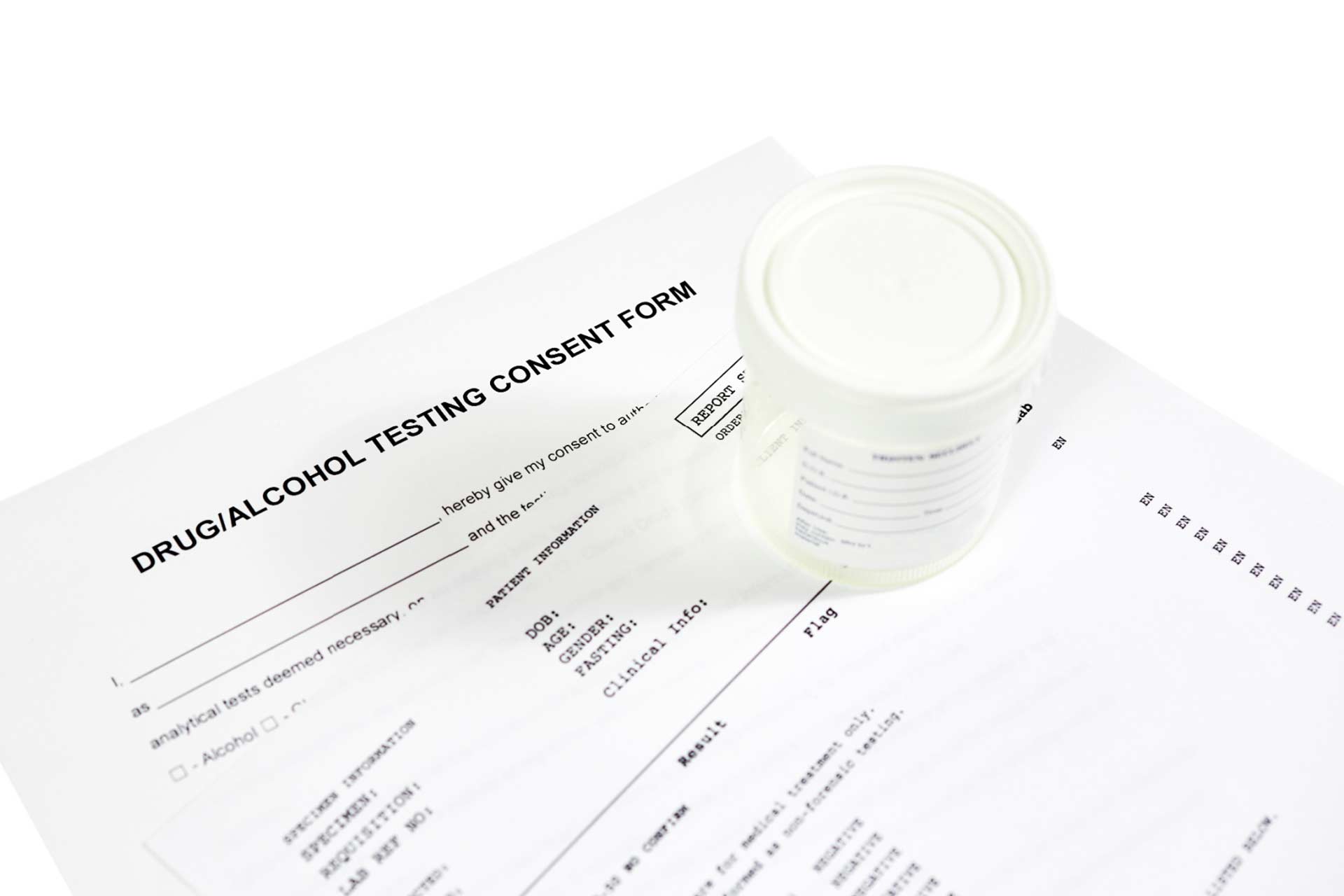
Drug Testing and Cannabis: What Do the Tests Look For?
Most workplace drug tests continue to include marijuana in their drug testing panel, even in legal states. Workplace drug tests, including Department of Transportation (DOT) tests, are typically set to trigger a positive marijuana result at 50 ng/ml.
If you’re required to complete a pre-employment drug screening or workplace testing, you can call the lab in advance to ask how many nanograms they’re testing for. This information will help you anticipate what your results might be, based on your past use of cannabis.
- For occasional users, metabolite levels in urine may remain above 50 ng/ml for 1-5 days
- For regular once-a-day users, levels may be detected for 1-3 weeks after discontinuing cannabis
- For moderate multiple-times-a-day users, levels may be detected 4-6 weeks following discontinuance
Factors that Impact Levels of Cannabis Metabolites in Urine
Your best friend tells you that they only had to stop using cannabis for one week to pass their drug screen. Your use is similar to theirs—so can you assume the same rule applies to you?
Not necessarily!
First of all, product potency plays into how long cannabis metabolites stay in your system. Your friend might be using a very low-dose tincture, while you depend on a product with ten times the amount of THC. Ingesting more THC means that you’ll end up with more metabolites which take longer to flush out of your system.
Also, body fat levels may impact how long THC-COOH remains present since it’s stored in fat cells. Put bluntly, the more body fat you have, the longer the metabolites might stick around.

Will CBD Hemp Cause a Positive Drug Test Result?
CBD hemp was legalized as part of the 2018 Farm Bill, and full-spectrum hemp (which contains all of the plant cannabinoids) may contain up to 0.3% THC under federal law. That amount of THC is so small that you won’t feel any intoxicating effects from it—but will it show up on a workplace drug test?
That’s an incredibly important question for many people. When your job is on the line, you can’t afford to take chances.
We suggest that anyone who is subject to regular or random drug tests should limit their purchases to CBD isolate products which have all THC removed. (Check out our article on CBD for more information on different types of CBD hemp.)
Be sure to confirm the products are THC-free by reviewing third-party test results, which are called Certificates of Analysis (COAs). All reputable manufacturers will have COAs available for their products. COAs should be on the product website or available by request. Details on the COA will vary, but they should always include results for CBD and THC levels.
We know that COAs can be confusing! Our Leaf nurses are experienced at reading COAs and can help with any questions you may have. Call us at 844-LEAF411 (844-532-3411) or chat us from the Leaf411.org homepage during hotline hours.
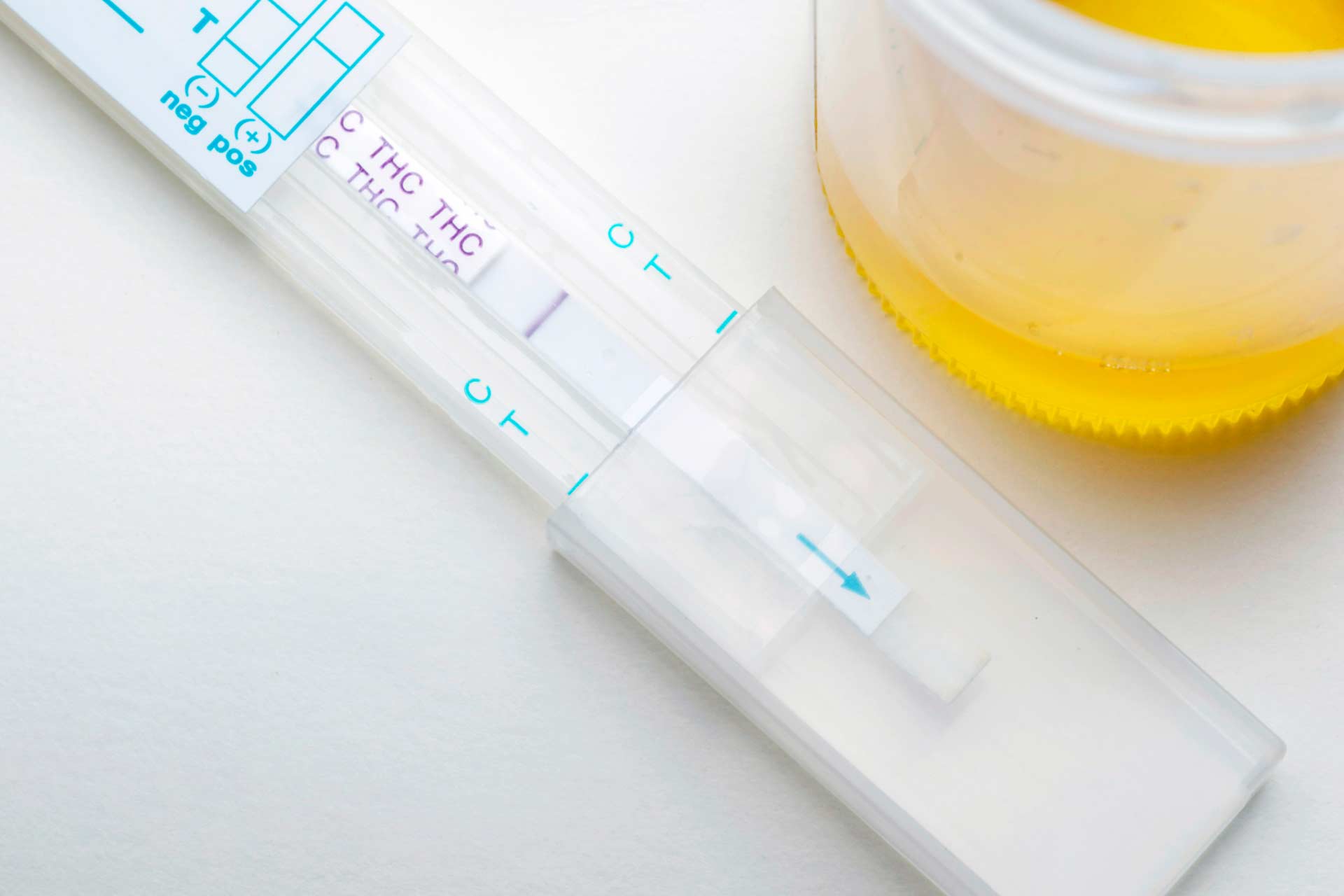
Using Retail Drug Tests as a Tool
Curious whether your cannabis use will register on an employer-mandated drug test? Test yourself and see! Over-the-counter urine drug tests are widely available for home use. They also give you the chance to find your optimal length of time to abstain from cannabis, if you’re anticipating pre-employment drug screening or annual tests in the near future.
Some companies like UTest even offer marijuana drug tests at different sensitivity levels, including 15 ng/mL, 20 ng/mL, and the standard 50 ng/mL, so that you can prepare based on what you know about your workplace’s testing policies.

Other Steps to Prepare for a Drug Test
You’ll find all kinds of advice online about how to pass a workplace drug test. Much of it is based on anecdotal evidence or is merely an urban legend.
However, we do suggest safely increasing your fluid intake prior to a test to help flush out metabolites more quickly. Also, if possible, schedule your drug test later in the day, when drug metabolites will be less concentrated in urine.
Our Leaf Nurses Are Ready to Help
Our fully-licensed registered nurses answer all sorts of cannabis and CBD hemp questions on the hotline. Whether you’re concerned about workplace drug tests or simply curious about trying cannabis for pain, insomnia or other health concerns, we’re here to help at no cost to you! Call us at 844-LEAF411 (844-532-3411) or chat us from the Leaf411.org homepage during hotline hours.
Cannabis and Pediatric Patients: A Closer Look at the Medical Marijuana Card Process for Children in Colorado
Medically reviewed by Katherine Golden, RN
Written by Denise Rustning
Back in January, we wrote about the pros and cons of medical marijuana cards. The overall takeaway was that if you live in a state like Colorado that has legal adult-use (rec) cannabis, you very likely don’t need to invest the time and money into a med card (also called a red card, since the cards originally were printed on a red certificate), at least not at first.
However, there were a few notable exceptions, including situations where the patient is under the age of 21. In those cases, med cards are a legal necessity!
Medical Marijuana Cards for Children Under 18
As of July 2020, the State of Colorado’s Medical Marijuana Registry includes a total of 286 patients under the age of 18, with 138 of those patients between 0-10 years old. While pediatric patients make up only a fraction of the registry, their need for relief is treated just as seriously by the state, with standard processes and safeguards in place to ensure safe access to legal cannabis.
Indeed, patients’ access to safe, legal cannabis is at the front of our minds these days as we fully launch our Leaf411 Affordability Program. One of the program’s priorities is to provide scholarships to patients seeking med cards, with a special emphasis on supporting minor patients who must undergo two independent medical evaluations as part of their med card application process. This doubles the burden on families both in terms of time and finances.
Costs aside, it can also be daunting to navigate the bureaucratic processes required to obtain a med card for your child. That’s why we decided to use today’s blog to walk you through Colorado’s medical marijuana card application process for minors.
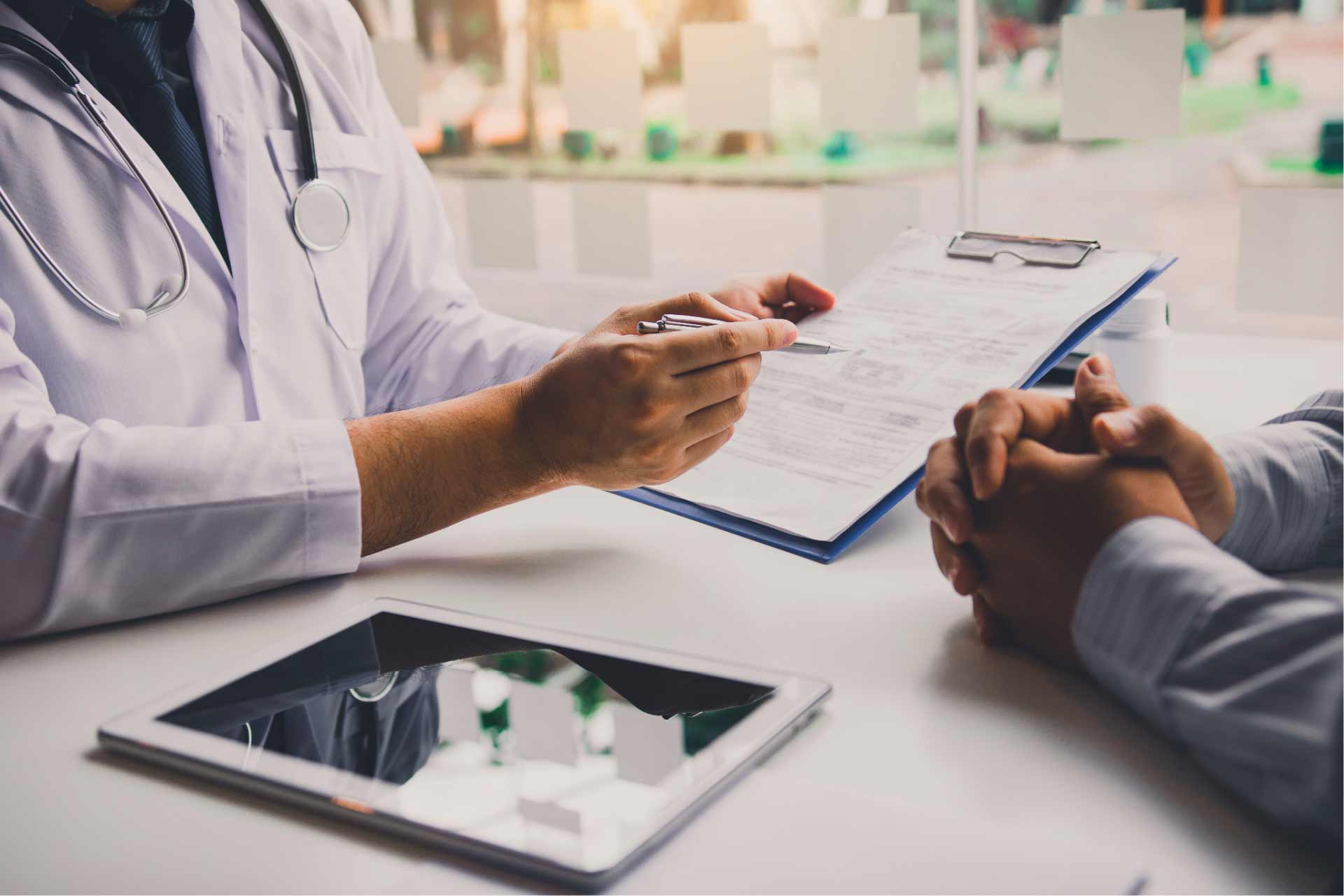
Know What Medical Conditions Are Covered
Qualifying debilitating and disabling medical conditions for medical marijuana cards vary from state to state. In Colorado, the qualifying conditions include seizures, persistent muscle spasms, cancer, PTSD and Autism Spectrum Disorder. You can find a full list here.
Beyond knowing what conditions are covered, it’s important to educate yourself on cannabis and cannabis therapeutics before pursuing a med card for your child, according to Leaf411 Advisory Board member Dr. David Gordon, who sees adults and pediatric patients for medical marijuana evaluations at his practice, 4 Pillars Health & Wellness. That education can help you come into the process with realistic expectations and be more prepared for the evaluation process.
For example, Dr. Dave shared that many people come into the process thinking that CBD is the only compound in cannabis that has value as medicine, while THC is a ‘drug’ to be avoided. That’s not the case at all!
“In reality, both CBD and THC are highly effective medications, and typically a good cannabis regimen will include both compounds. Adding THC to someone’s regimen, including children, does not mean the patient is getting high,” says Dr. Dave.
Our Leaf nurses are a great resource at this step. Our nurses can help you understand the compounds of the plant, provide balanced education so you can make an informed decision on when it’s necessary to visit with a cannabis MD, and they’re available at no cost to you! Call 844-LEAF411 (844-532-3411) or chat us from the Leaf411.org homepage during our hotline hours. We also have a section in our Leaf Library dedicated to research and news specific to cannabis and minors.

Understanding Your Role as a Caregiver
When applying for a medical marijuana card for your minor child, you’re considered the caregiver. As a caregiver, you’ll be responsible for submitting your child’s application and renewal, as well as growing or purchasing cannabis on behalf of your child.
There are four different types of caregivers under Colorado regulations:
- Cultivating: grows marijuana on behalf of patients.
- Transporting: transports marijuana for homebound patients.
- Parents of a minor patient: Parents of a patient under age 18.
- Advising: Advises patients on the medicinal use of marijuana.
Only cultivating and transporting caregivers are required to register with the state (see the Caregiver Registration FAQs for more information).
Which Comes First? The Physician Evaluation or the State Med Card Application?
We brought this question to Dr. Dave, who said it’s helpful for the parent or guardian to start the online med card application process before the physician visit, stopping at the point when the application asks for the physician certification. After the visit, you can go back and complete the application.


Completing the Online Marijuana Med Card Application
The online application requires you to provide proof of your child’s identity, parents’ identity and residency in Colorado by supplying the following:
- Child’s social security number
- Child’s certified birth certificate
- Both parents’ Colorado-issued photo IDs. If you recently moved to the state, there are alternate ways to prove residency–ask the physician’s office what documents they require in this case.
- If the other parent lives in-state but is unable to attend the evaluation, you’ll also need to provide a signed, notarized Minor Patient Consent Form.
- If the other parent lives out of state, you’ll need to submit a copy of their out-of-state ID, unless they are deceased or do not have shared custody. In those cases, you’ll need to provide certified sources reflecting the other parent’s status.
Another part of the med card application process that can be confusing is the “Cultivation Information.” Basically, this is where the state is asking how you’ll get your child’s cannabis medicine. Will you grow it? Buy it in a dispensary? Or both?
Many people prefer to use legal medical marijuana dispensaries which have a wide range of product types and ratios. As a caregiver, you will use your child’s med card to purchase medical marijuana products from dispensaries on their behalf.
Finding a Medical Marijuana Evaluation Physician for Pediatric Patients
It’s highly unlikely that your child’s regular pediatrician or care team will officially recommend medical marijuana, due in part to cannabis’s lack of approval by the FDA. They might risk losing their job if they began recommending cannabis to patients. However, the conversation is slowly changing around cannabis’s potential in pediatric patients, with organizations like Children’s Hospital Colorado developing pediatric medical marijuana policies that address safe use.
How do you find the two providers willing to complete medical marijuana evaluations? While most physicians steer away from conducting medical marijuana evaluations for either adults or children, others are attracted to the field of cannabis medicine after seeing the life-changing difference that cannabis made in their patients’ lives.
In Colorado, a medical marijuana physician must be either an MD or DO who is in good standing and licensed to practice in the state. They also need to be registered with the state to submit medical marijuana certifications online.
At Leaf411, we can help point you toward reputable physicians for your child’s medical marijuana evaluation. We’ve also partnered with select physicians as part of our med card scholarship program. To learn more about this program, check out our Affordability Program page. The link to apply is at the bottom of that page.
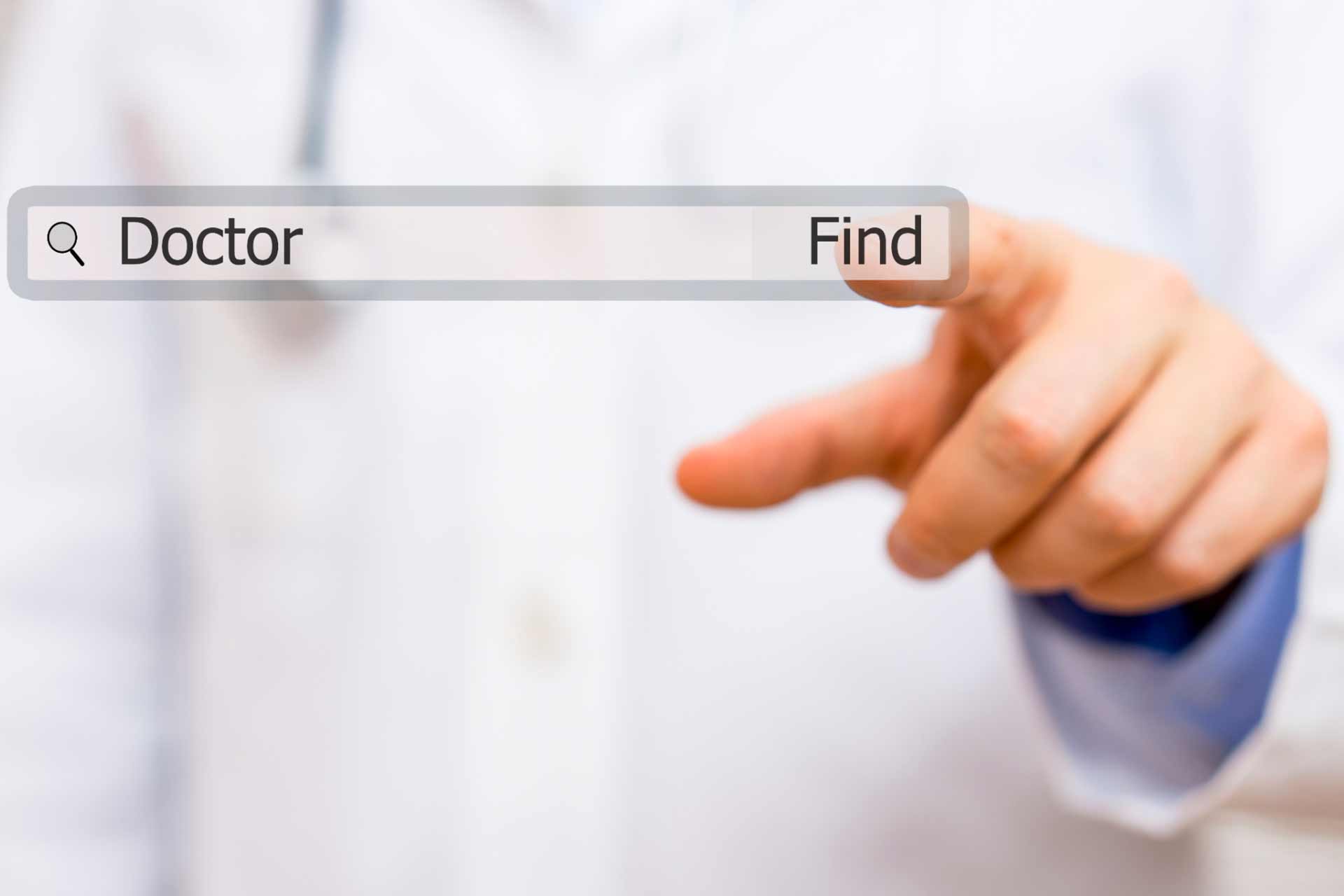
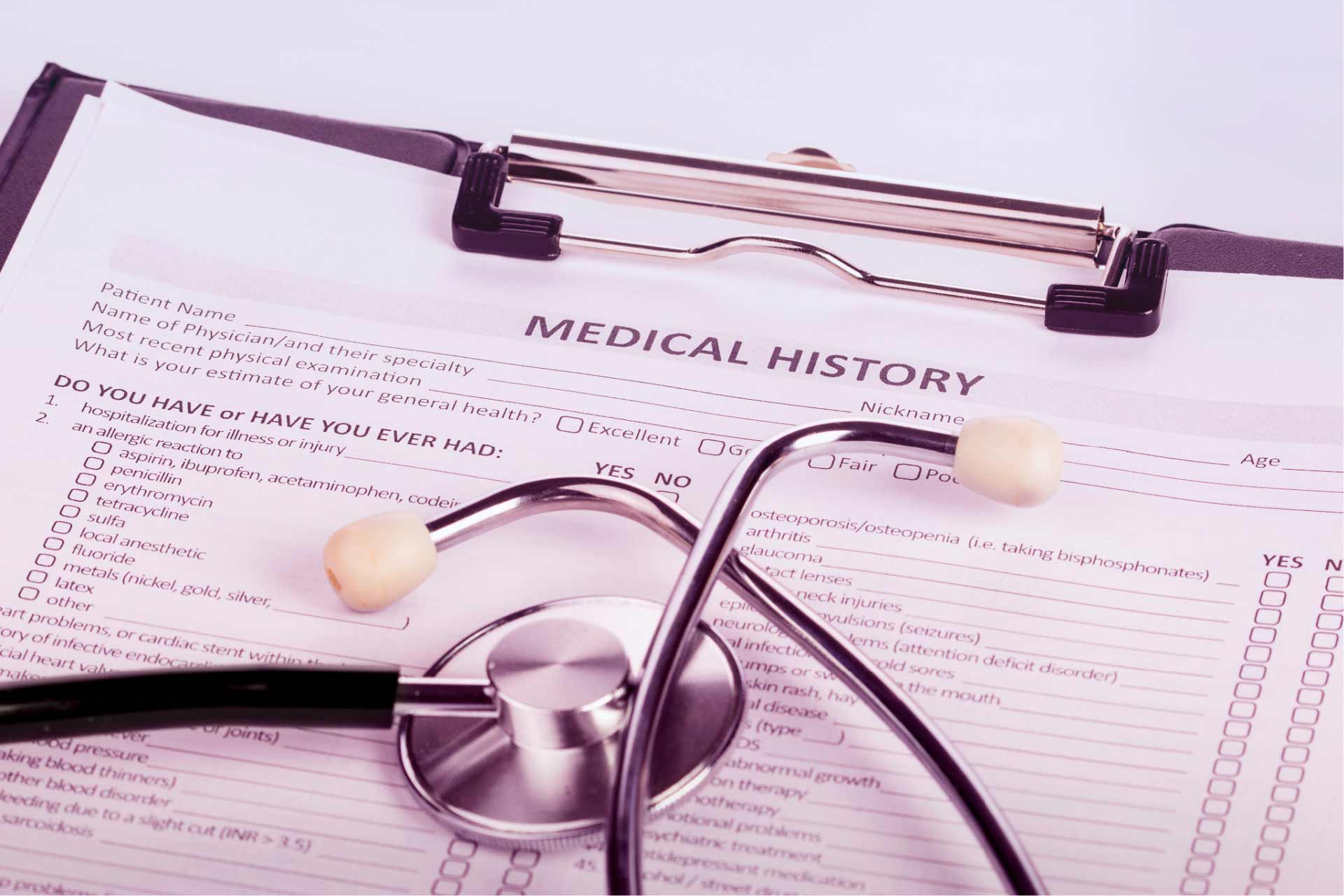
Preparing for the Medical Marijuana Evaluation Process
Adult medical marijuana evaluations can be very quick and casual, depending on where you go and what level of visit you select. Children’s evaluations, however, tend to be more detailed due to state medical marijuana requirements for this age group.
Plan to bring the same documents that you provide to the state documenting identity and Colorado residency, as well as your child’s medical records and any notes on other treatments or therapies you’ve tried for the child’s condition and the benefits/downsides to those treatments.
This information helps the physician determine your child’s eligibility for a medical marijuana card. Remember that the physician is bound by law, and can only recommend a med card if your child suffers from one of the state-designated conditions.
Beyond the paperwork, Dr. Dave says it’s important to make sure ahead of time that you’re clear on your specific goals for plant-based therapy as well as any other approaches the physician might suggest.
Be prepared for the physician to suggest other behavioral or nutritional tools that can complement cannabis medicine.
Dr. Dave says, “Cannabis is not a one-size-fits-all treatment like most other medications. It can take up to six months to dial in an optimal regimen. It’s also important for people to know that neither cannabis nor any other medication is ever going to be a magic bullet. To achieve great outcomes, cannabis has to be just one part of a comprehensive treatment plan that typically involves a variety of lifestyle measures.”
At the end of the visit, the physician submits their certification online to the state’s medical marijuana registry. That certification includes your child’s name and identifying information, making it easy for you to link to when you finish setting up your child’s online account with the state.
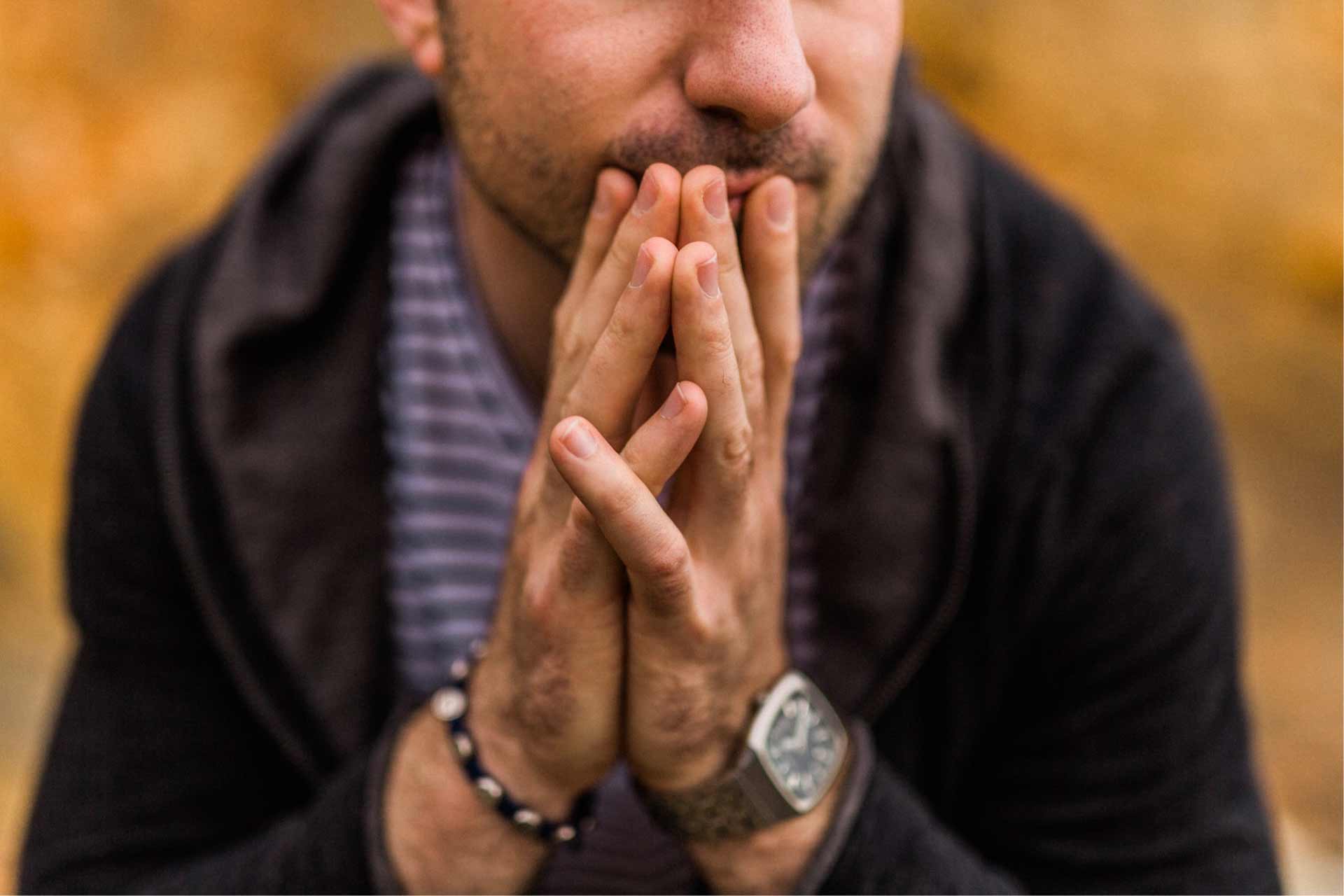
Considerations Before Applying for a Medical Cannabis Card for Your Child
Many parents come to cannabis after exhausting conventional options for managing their child’s seizures, chronic pain or cancer treatment side effects. That was our board member Amy Dawn Bourlon-Hilterbran’s experience, ultimately leading her to form the American Medical Refugees group for other parents in similar situations.
At Leaf411, we’re committed to providing straightforward, balanced information. While we believe in cannabis’s therapeutic potential, we also know that in the current environment, cannabis still suffers from stigma and misunderstandings that could create challenges as you pursue a medical card for your child.
We don’t mean to discourage you here, but simply prepare you for any potential roadblocks or unanticipated consequences before they arise. These barriers can be very frustrating when all you’re trying to do is find a safe alternative for your child’s health condition:
- When considering a med card for your child, make sure that you and your parenting partner(s) are on the same page about the plan and your goals for your child’s health. This is especially critical when parents are separated, since even a parent’s legal cannabis use may factor into court decisions around custody.
- Also, school district policies are evolving in Colorado and other states with legal medical marijuana. Depending on where you live, you’ll likely need to review the laws and provide education to your childcare providers or district personnel who are concerned about liability or loss of federal funding.
- In higher education, many universities including the University of Colorado and Colorado State University prohibit cannabis possession on campus, with both universities stating that “possession of a Medical Marijuana Registry identification card does not authorize a student to possess, use, or distribute marijuana on campus. This includes university residence halls, dining facilities and public areas.” Students with a documented medical need for cannabis may petition to be released from on-campus housing requirements, though.
- As long as cannabis remains illegal at the federal level, regular cannabis use will be a likely disqualifier for enlisting in the military, even if the person holds a med card. However, it’s very likely the health condition your child suffers from would be disqualifying in and of itself, so this may not be a concern.
- If your child is employed or participates in extracurricular activities, they may also be subject to random drug testing—and simply living in a legal state and holding a valid med card isn’t protection against disciplinary action.
So that’s the bad news–for now. Support for full legalization of cannabis is widespread and growing, as the public and medical professionals learn more about the benefits of the plant. As a parent seeking cannabis medicine for your child’s serious health condition, you’ll be one of the pioneers. Other parents have walked the path before, and are willing to share their support via organizations like American Medical Refugees.

A Final Word of Encouragement
When we asked Dr. Dave what he’d say to patients who are contemplating cannabis as an alternative for themselves or their children, he said this:
“No one needs to be scared of cannabis treatments. When used appropriately, cannabis therapeutics are extremely safe among all age demographics. Most of the fear-mongering is from people who know very little about the plant and its compounds. Many patients who are looking to cannabis have been struggling with issues for years or decades and haven’t been given treatment options beyond pharmaceuticals and surgeries. These patients often have little hope for success. Cannabis can be a powerful medicine but also a gateway into the greater world of integrative health which provides an abundance of options to help these patients achieve success.” –Dr. Dave Gordon
Leaf411 Provides Balanced Cannabis Guidance without Judgment
Remember that we’re happy to help answer your questions on our free anonymous hotline at 844-LEAF411 (844-532-3411). Our Leaf nurses talk to many parents and guardians who are at all stages of their journey helping their children–from those just beginning to seek out alternatives to parents who are seeking guidance on the best CBD: THC ratio for a particular health concern.
Sign up for our newsletter below to be the first to learn about upcoming Leaf Learning: Get the 411 Series events and other news about what we and our Leaf411 supporting members are up to!
Cannabis 101: The Endocannabinoid System
Is the endocannabinoid system real? How does cannabis interact with it? We answer your questions in today’s Cannabis 101 blog.
Medically reviewed by Katherine Golden, RN
Written by Denise Rustning
For anyone unable to attend our inaugural Leaf Learning Series: Get the 411 on Cannabis Therapeutics, we wanted to take a step back and give you a quick review on the body’s endocannabinoid system, or ECS. A basic understanding of this system will go a long way in helping you find the best CBD hemp or cannabis product for your needs.
We can already hear what you’re thinking—that the ECS sounds made-up. After all, none of us learned about the ECS in high school biology!

How the Endocannabinoid System Was Discovered
The discovery of the ECS happened relatively recently. In 1988, scientists discovered that rats’ brains had specialized receptors that were activated by THC. The identification of these receptors led to new knowledge about the ECS, including:
- The ECS is found in humans, dogs, and all other animals that have spinal cords.
- This system’s purpose is to maintain internal balance (also called homeostasis).
- It plays an important role in regulating metabolism, sleep, mood, and immunity, along with other functions.
What are CB1 and CB2 Receptors?
Your body’s ECS contains two types of cannabinoid (CB) receptors: CB1 and CB2.
- CB1 receptors are found in your central nervous system—primarily your brain and spine. These receptors play a role in memory, behavior, appetite, motor control, and perception of pain.
- CB2 receptors exist throughout the body, helping to control inflammation and immune response.
The body produces endocannabinoids which bind to the CB1 and CB2 receptors, signaling when the system needs to take action to maintain or restore internal balance.
Just like any other system in your body, the ECS can also fall out of balance, requiring intervention to restore homeostasis. Dr. Ethan Russo has published extensive research on this front, looking specifically at how clinical endocannabinoid deficiency may be connected to treatment-resistant conditions including migraines, irritable bowel syndrome, fibromyalgia and other conditions.

How Cannabis Supports Your Endocannabinoid System
Dr. Dustin Sulak at Healer.com is an expert in the ECS. In this 3-minute video, he explains how cannabis and the ECS interact: https://healer.com/the-endocannabinoid-system-video/
(Prefer reading over video? You can find Dr. Sulak’s article on the ECS at this link.)
Scientists in other medical specialties are aware of the ECS as well, researching its potential as a therapeutic avenue for treating a wide range of diseases.
When thinking about the connection between your ECS and cannabis, it’s helpful to look at how you already use medicines to help your body. For example, your body generates pain-killing endorphins in response to pain, but you also take ibuprofen to reduce pain and inflammation. With cannabis, the difference is that endocannabinoids (produced by your body) and cannabinoids (produced by the cannabis plant) are very similar to one another, which minimizes unwanted side effects.
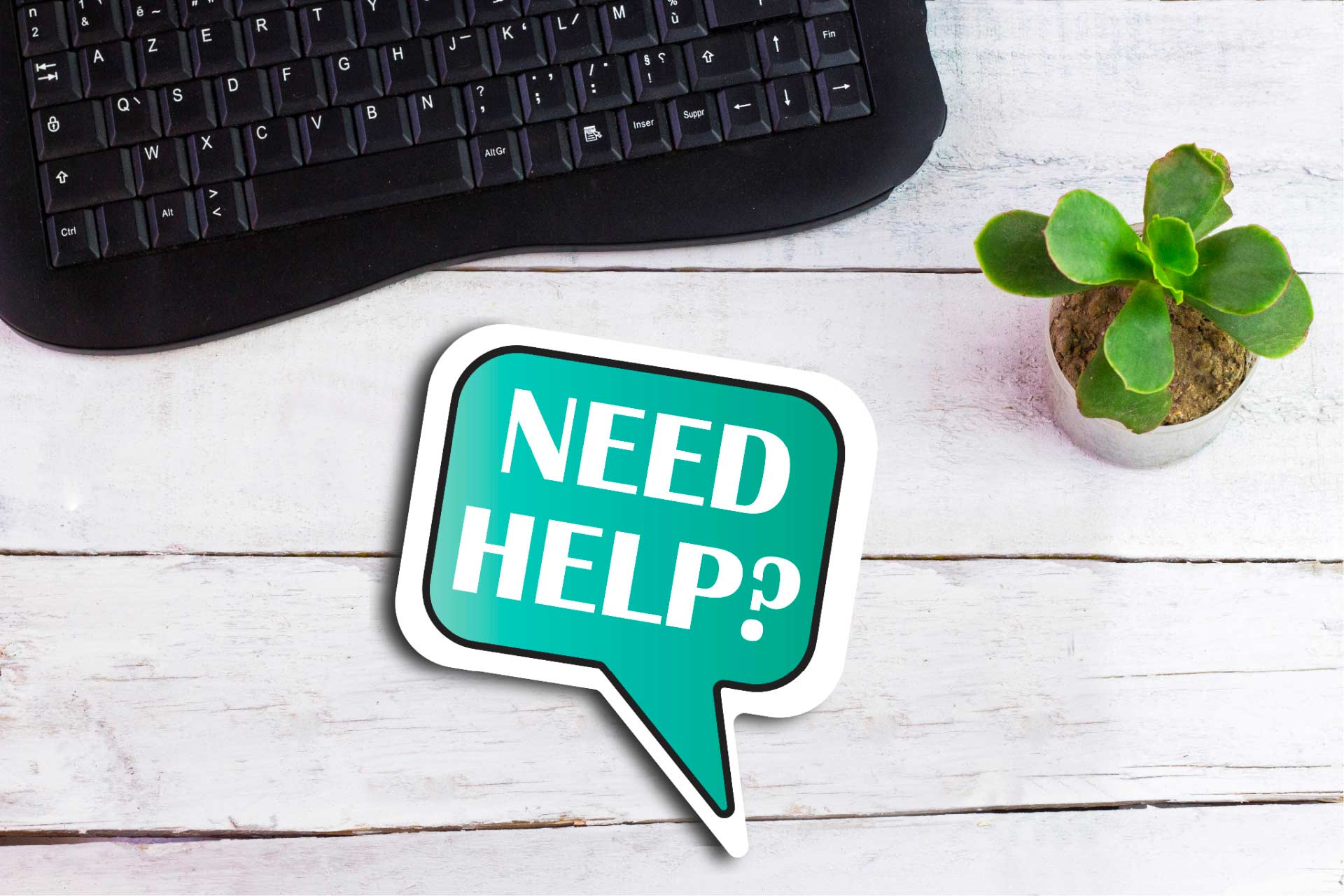
Our Leaf Nurses Can Help
Now that you’ve learned about the ECS, you might be wondering how to use this knowledge to guide your use of CBD hemp or cannabis containing higher levels of THC. Our Leaf nurses have completed specialized clinical education on the endocannabinoid system, and can help you find the most effective CBD hemp or marijuana options for your specific health goals. As you likely know from our other blog posts, not all pain or insomnia are the same. Different issues may require different approaches to maximize the ECS’s potential to restore balance. Call 844-LEAF411 (844-532-3411) or chat us from the Leaf411.org homepage for free guidance tailored to your questions!
Not ready to chat with a nurse? You can find more information about the ECS in our Leaf Library.
Our Leaf Learning: Get the 411 Series is a great way to learn more about how cannabis might help relieve pain, improve sleep, and restore balance. Be sure to sign up for our newsletter below so you can be the first to know about upcoming topics for the next Leaf Learning: Get the 411 Series event!
Top Takeaways from the Inaugural Leaf Learning Series
Medically reviewed by Katherine Golden, RN
Written by Denise Rustning
Were you able to join us on Thursday, August 20th, for our first online Leaf Learning Series? If not, don’t worry! We plan to release an archive of the event at a future date. Be sure to sign up for our newsletter at the bottom of this page to find out when the content is available! As a newsletter subscriber, you’ll also be the first to learn about our next session covering all things CBD hemp.
In the meantime, we thought we’d share some of the top cannabis takeaways from our inaugural session.

When it Comes to Cannabis, Everyone is Different
Everyone has an endocannabinoid system—but everyone’s endocannabinoid system is just a little bit different. Leaf411’s Founder and CEO/ED Katherine Golden, RN, and our Advisory Board member Dr. Dave Gordon from 4 Pillars Health & Wellness always recommend starting low and going slow when finding your optimal dose of CBD hemp or marijuana containing higher levels of THC, in part because everyone’s endocannabinoid system is unique. The dose that works best for your friend or partner might not be the best amount of CBD or THC for you.
During the learning session, Dr. Dave also talked about how there’s no one best way to use cannabis. Different product types offer different benefits, depending on your health issues and wellness goals.
Understanding the basics of your endocannabinoid system and how CBD, THC and other cannabinoids interact with this system is a great place to start on your cannabis journey, saving you time and money as you begin exploring the best cannabis options for your health goals. That’s why we focused on Cannabis Therapeutics 101 for this first session!
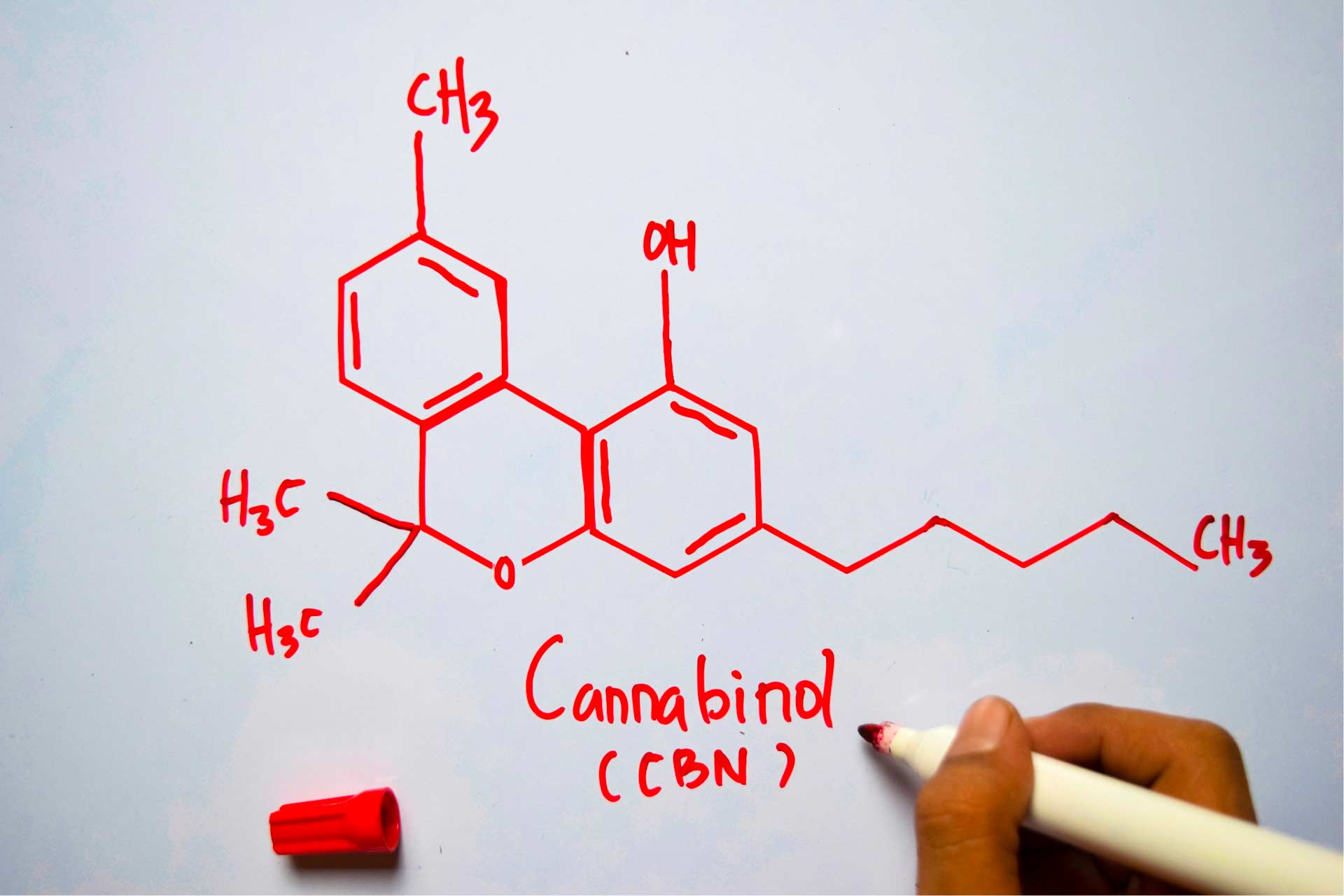
In a subsequent session during the event, Dr. Dave addressed the therapeutic potential of minor cannabinoids like CBN for sleep, and THC-A as a non-intoxicating alternative to help manage pain and nausea. He also talked about how some peoples’ sensitivity to minuscule amounts of THC might actually be due to either inconsistent product quality or the type of product they’re using—this is a much more common experience with edibles as a result of how THC is metabolized by the liver.
Want to learn more? Keep an eye out for the recorded session, and in the meantime, we encourage you to look through our blog and Leaf Library, which includes useful FAQs.
Of course, you are always welcome to call us at no cost at 844-LEAF411 (844-532-3411) or chat us from the Leaf411.org homepage during our hotline hours.
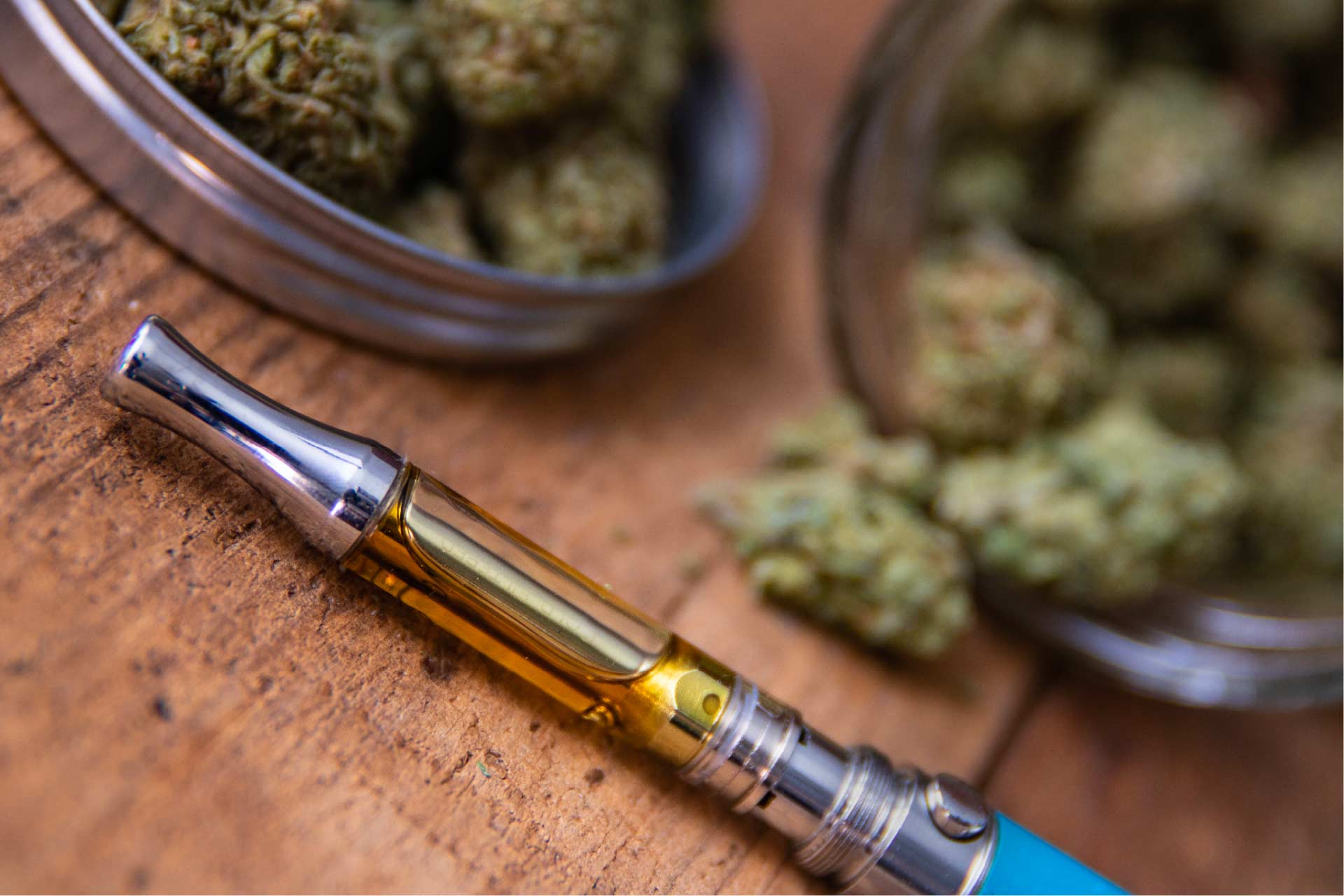
Cannabis Medicine: Don’t Be Afraid of Inhalation
Dr. Dave and Katherine tackled one of the biggest hesitations many people have with cannabis—smoking and vaping. They discussed how inhalation methods may provide a safe, effective way to use cannabis medicine. Inhalation can be especially effective when seeking immediate relief for breakthrough pain or nausea. Dr. Dave suggested that vaping flower is a good approach, especially if you’re concerned about unwanted ingredients in vape cartridges.
If you are shopping for oil vapes, look for products with limited ingredients, and which don’t contain propylene glycol (PG), polyethylene glycol (PEG), or vitamin E acetate (the identified source of last year’s 2019 vaping-associated lung injuries).
Several of our supporting members have developed cannabis edibles that utilize cutting-edge technology to deliver a delta-9-THC inhalation type experience—check out Quiq’s wide range of products or Wana Brand’s Fact-Acting Gummies as examples of this new type of product.
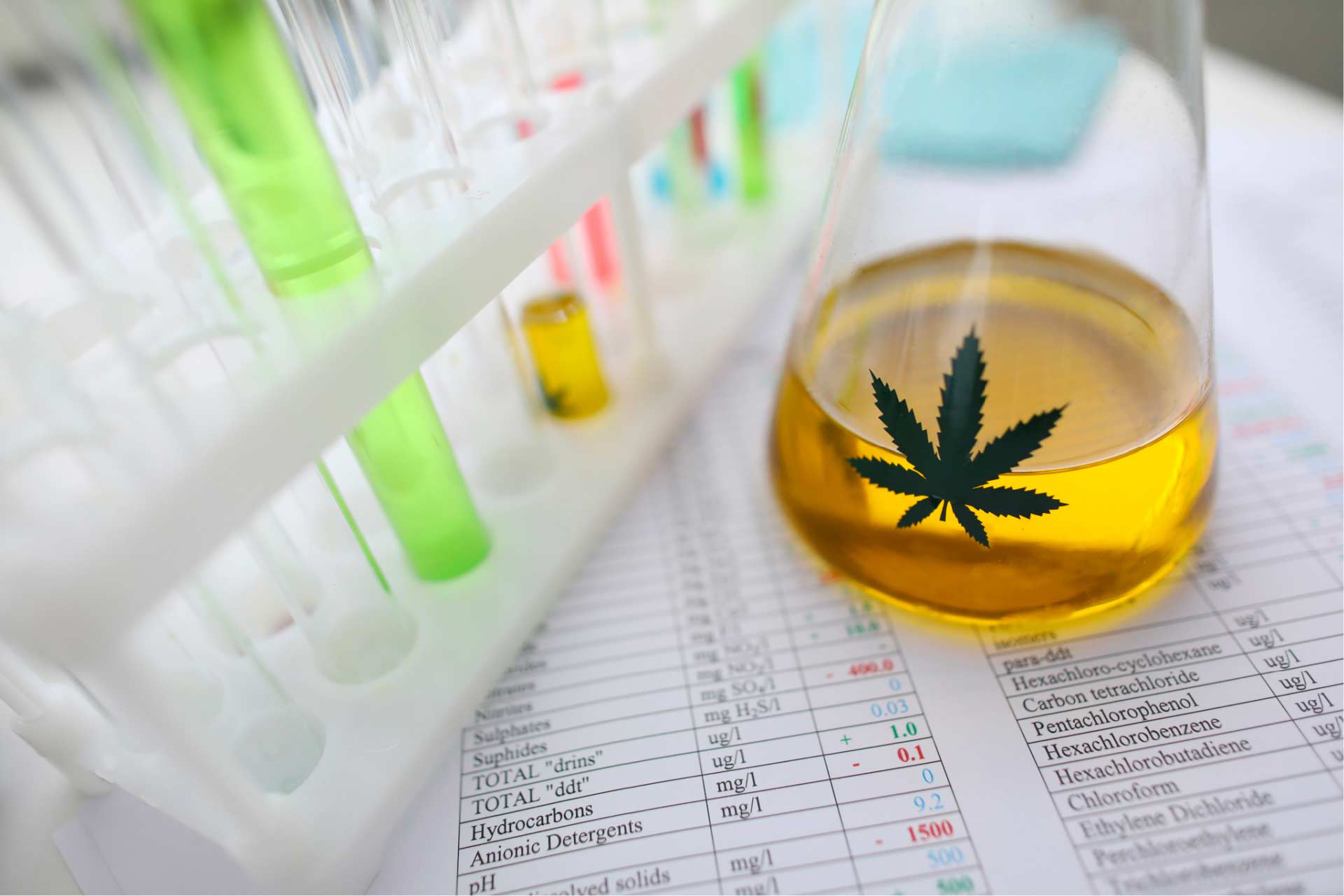
Cannabis Product Quality Matters
At Leaf411, we know that quality matters. Product quality and safety are always in the front of our minds when we review potential members.
During our Leaf Learning Series, we were excited to provide a platform for many of our members to talk about their ingredient sourcing and product manufacturing processes. Attendees chatted with company representatives, including founders and CEOs, during live sessions and in the vendor expo hall.
Nature’s Gift Shop, an incredible family-owned dispensary in West Pueblo, and Lightshade Dispensary, with locations throughout the Denver metro area, both shared dispensary tours along with live Q&A, with participants asking questions about the different products they offer. Both dispensaries are dedicated to making every visit a positive experience by meeting consumers where they’re at, whether they’re brand new to cannabis or an experienced user. By the way, the next time you visit Nature’s Gift Shop, be sure to check out their Willie Nelson sculpture that was made by a local artist!
Robbie Wroblewski also provided an incredibly fun and interactive virtual tour of Seed & Smith’s Growhouse, answering a wide range of audience questions. While we missed smelling the extract room (a feature of their pre-COVID in-person tours), we appreciated the behind-the-scenes look at how cannabis is cultivated.
All of this content will be available on-demand soon. Be sure to sign up for our newsletter for updates!
Learning From Top Cannabis Experts
Remember how we said that everyone’s endocannabinoid system is unique? Cannabis retailers and manufacturers understand that consumers have different health goals, tolerances and product preferences as well!
Many of our supporting members employ food engineers, chemists and other industry experts to develop reliable, high-bioavailability cannabis products. If you weren’t able to attend the August 20th session, we hope you’ll find time to join us in the future, because you’ll be amazed by both our supporting members’ professional backgrounds and the science that they’re bringing to their product development!
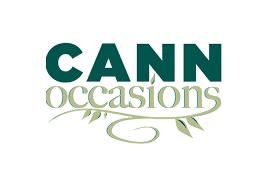
A Special Thank You to CannOccasions
We also want to extend special recognition to the amazing CannOccasions team who managed the registration, online event platform and all logistics. If you’re seeking a professional cannabis events management company for your virtual or IRL event, we highly recommend CannOccassions!
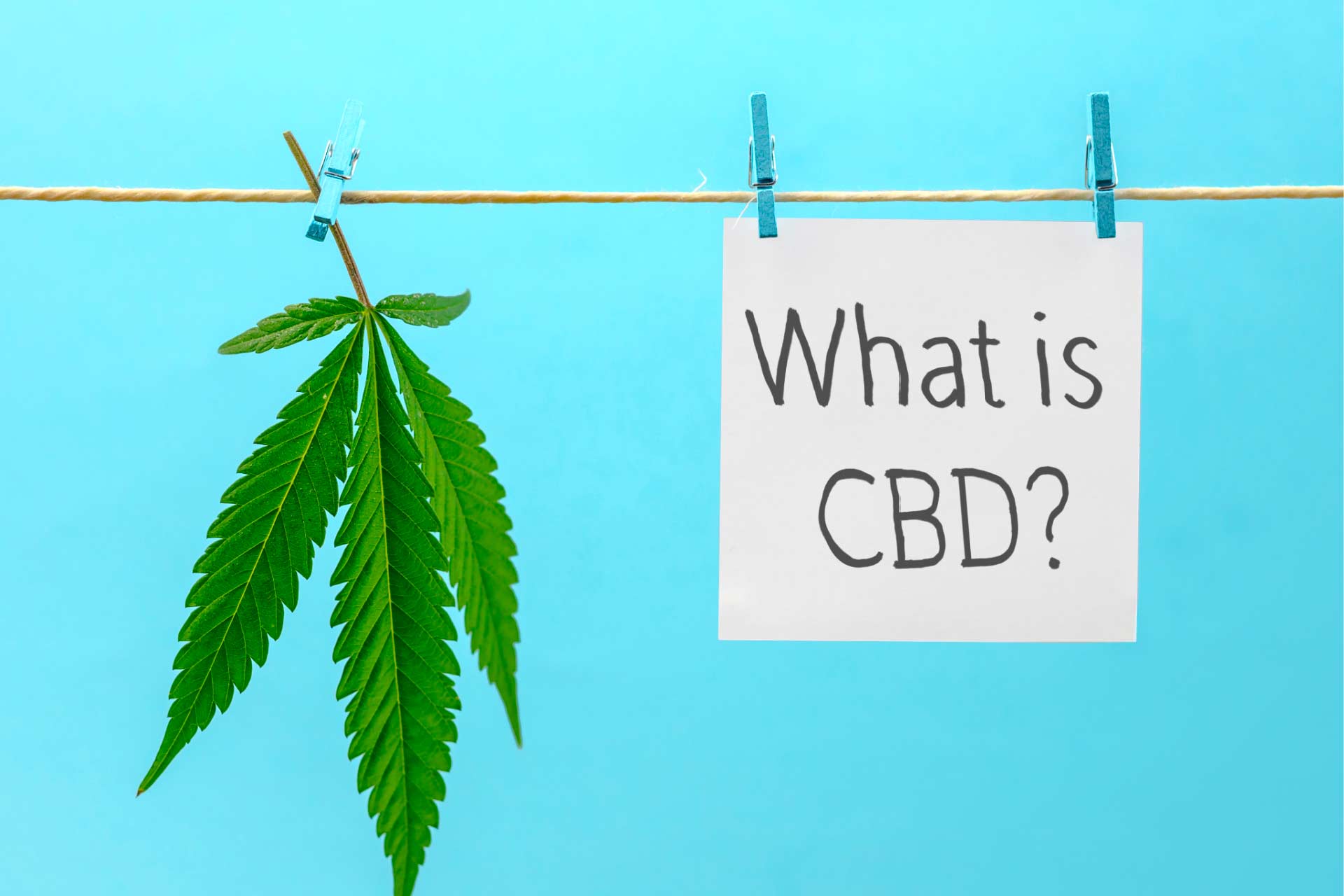
Looking Forward to Our Next Leaf Learning Event: All About CBD
Our next Leaf Learning event will be all about CBD! We’ll cover the differences between full-spectrum, broad-spectrum and isolate forms of CBD hemp, and provide education to help you find the right CBD for your health goals.
We also know that many people, including first responders and healthcare workers, are concerned about whether CBD hemp can trigger positive workplace drug test results, despite the fact that it’s a non-intoxicating substance. Join us during our next Leaf Learning event to hear answers to these concerns and more.
We’re still in the process of scheduling our CBD hemp-focused Leaf Learning event. Sign up for our Leaf411 newsletter below to stay in the loop as we release more registration details!
Cannabis for Sleep: Tips to Find the Best Product for Your Needs
Medically reviewed by Katherine Golden, RN
Written by Denise Rustning
Cannabis can be a powerful tool for a good night’s sleep, whether you’re dealing with stress or simply age-related insomnia, a topic we discussed in a recent blog post.
However, when it comes time to find the best cannabis products for sleep, your choices may feel overwhelming. Today, we’ll take a look at cannabis products legally sold in medical and adult-use (recreational) dispensaries, breaking down the options. If you’ve ever been confused when it comes to strains (chemovars), ratios, or the pros and cons of edibles versus inhaled products, then today’s blog post is for you.
A Quick Refresher on THC, CBD and Terpenes
We previously talked about the role that the cannabinoids THC and CBD play in our post on using cannabis for pain.
- CBD: This cannabinoid is the star player in hemp products which are federally legal. CBD hemp products are required to have below 0.3% THC, which is such a small amount that it’s not intoxicating and won’t get you high. You’ll also find CBD in cannabis products that contain higher levels of THC.
- THC: The cannabinoid responsible for the “high,” if used in large enough amounts. Cannabis products containing over 0.3% THC remain illegal at the federal level and can only be legally purchased in states that have legalized adult-use (recreational) or medical marijuana.
Of course, CBD and THC aren’t the full story. Terpenes are increasingly understood to play a major role in cannabis’s therapeutic benefits. Plant terpenes are aromatic compounds found in many different plants—for example, the relaxing linalool terpene is found in lavender as well as cannabis.
Terpenes and other plant compounds work together with cannabinoids to create an entourage effect that provides therapeutic benefits beyond any one single compound. Terpenes can also help buffer THC’s intoxicating impact, based on research conducted by Dr. Ethan Russo.
If you’ve ever wondered how some cannabis strains can promote relaxation and sleep while other strains are known for boosting energy and creativity, the answer is largely due to different terpene profiles. We’ll dig into this topic more below.
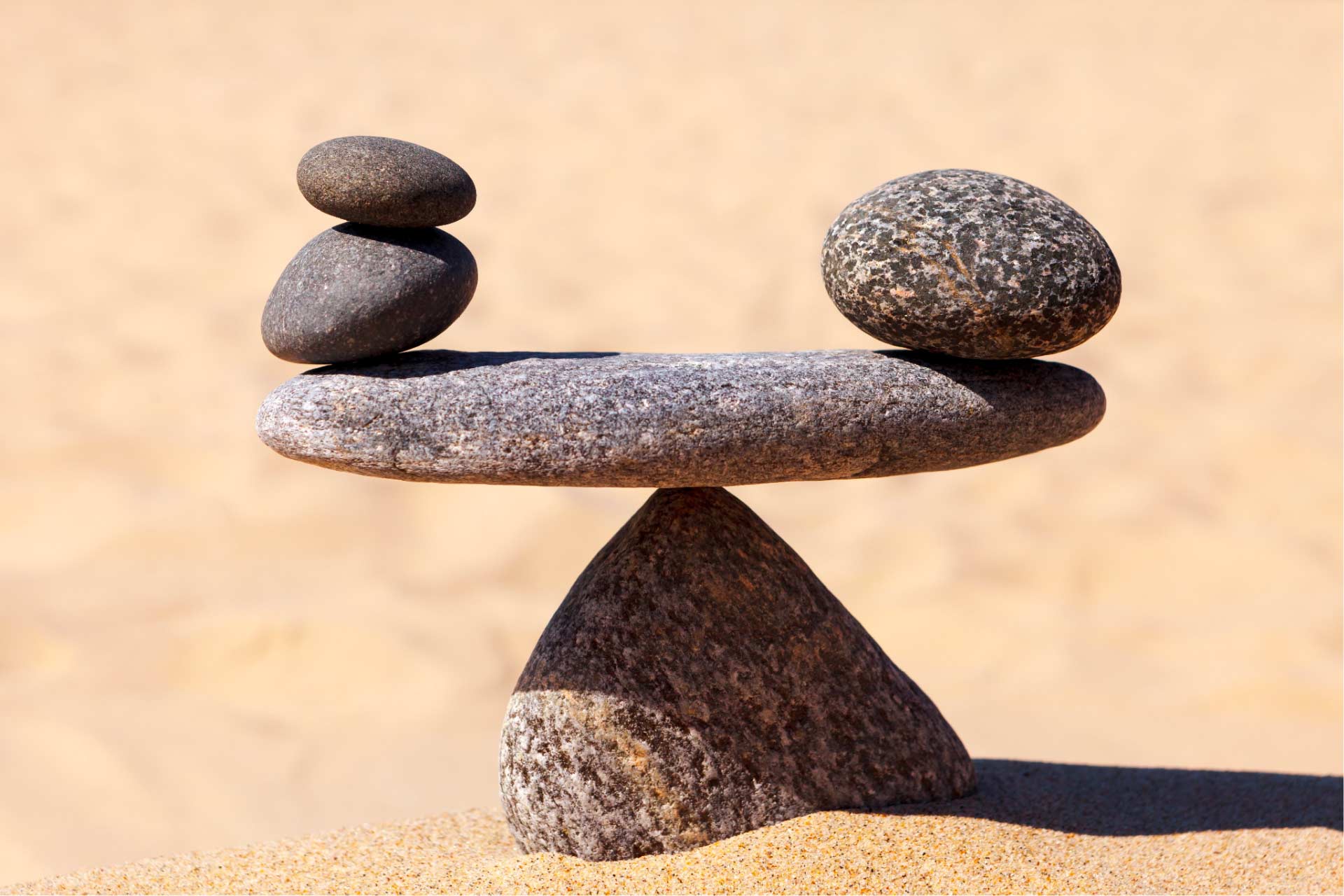
Finding the Best CBD:THC Ratio for Sleep
You may hear budtenders, your friends and especially the Leaf411 nurses talk about the importance of understanding the “ratio” in products. They’re referring to cannabis products manufactured with specific ratios of CBD to THC. For example, a 1:1 ratio product will contain equal parts of CBD and THC, while a 5:1 ratio product will contain five times as much CBD as THC. Understanding different ratios can be a huge help when finding the best sleep product.
Many of our supporting members manufacture different ratio products in addition to THC products. We encourage you to check out each manufacturer’s website to see the range of ratios they offer. Here are some examples showing how different options can help you dial in your cannabis dose for sleep:
Many people find success with a ratio product that’s THC dominant. While these can be more challenging to find, several of our supporting members, including Conscious Medz, have developed products to address this need.
Our Recommendation for the Best CBD:THC Ratio for Sleep
What’s the best ratio to start with? This depends on two factors: (1) The cause of your insomnia (pain, inflammation, stress, mind chatter, etc); and (2) How sensitive your body is to THC.
Typically, we suggest starting with the current gold standard which is a 1:1 ratio, equal parts of CBD to THC, following our mantra of starting with a very low dose and slowing building up. However, depending on your specific health concerns, you might do better with a different ratio. For example, if you have anxiety at night, a 2:1 ratio of 2 parts CBD to 1 part THC may be a safer choice since too much THC for your body can actually worsen anxiety.
Remember that you can always call our free nurse hotline at 844-LEAF411 (844-532-3411) or chat us from the Leaf411.org homepage for personalized guidance that will help you save time and money.
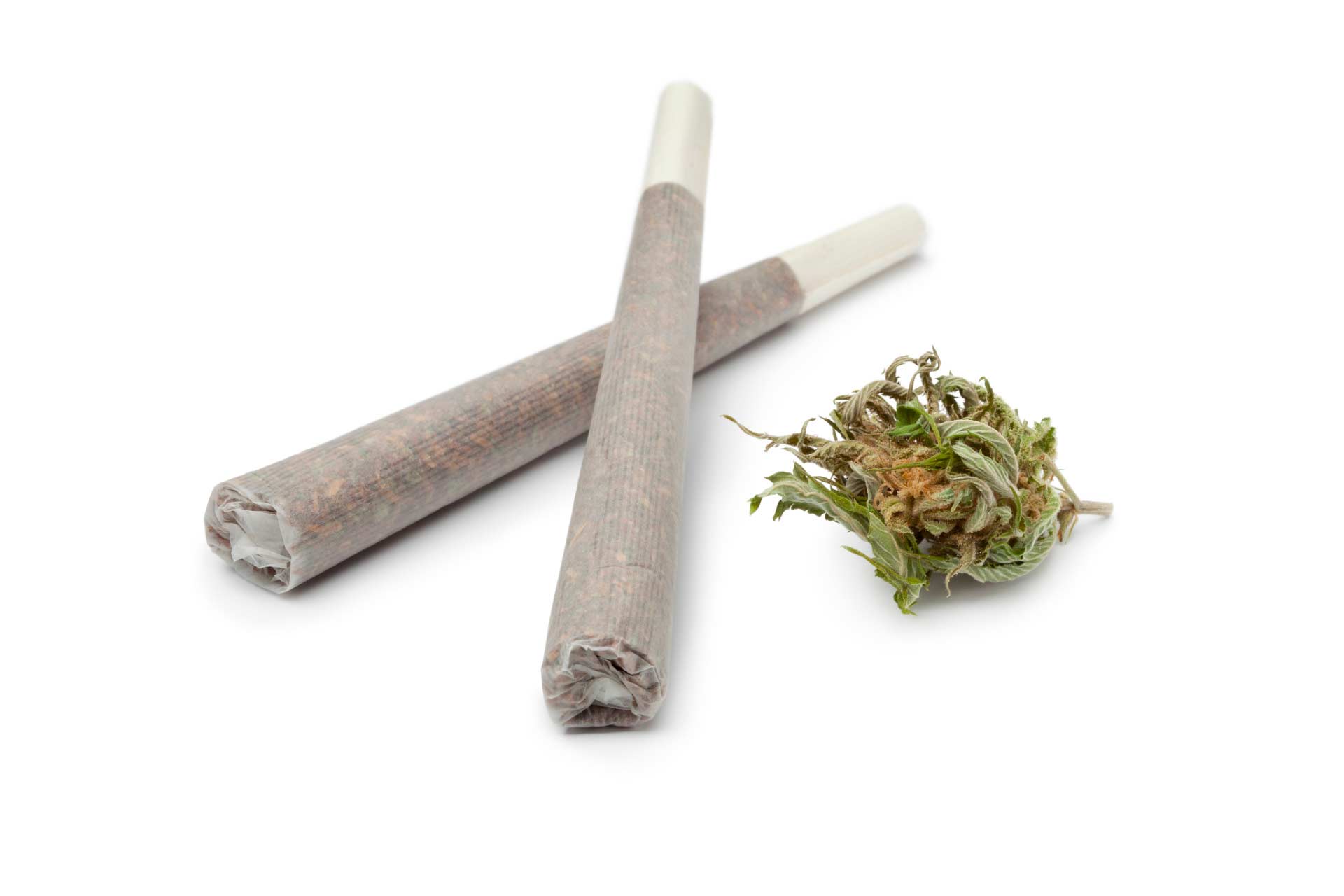
What You Need to Know About Inhalable Cannabis for Sleep
You may be wondering how ratios work when it comes to cannabis flower (bud). Most cannabis sold in dispensaries is THC dominant, with very little CBD. That doesn’t mean that CBD-dominant strains don’t exist, though! They can be challenging to find and don’t necessarily provide the best sleep solution for everyone, however.
Remember, a small amount of CBD alone can actually make your mind more alert. If you’re trying a CBD-dominant flower, you’ll want to experiment with your inhaled dose earlier in the evening versus when your head is about to hit the pillow to ensure you are feeling the sedation you desire. You can always adjust by adding a bit of THC if not.
As you recall, THC and CBD are only part of the story. In the next section, we’ll dive into different cannabis strains and talk about how they impact sleep quality.
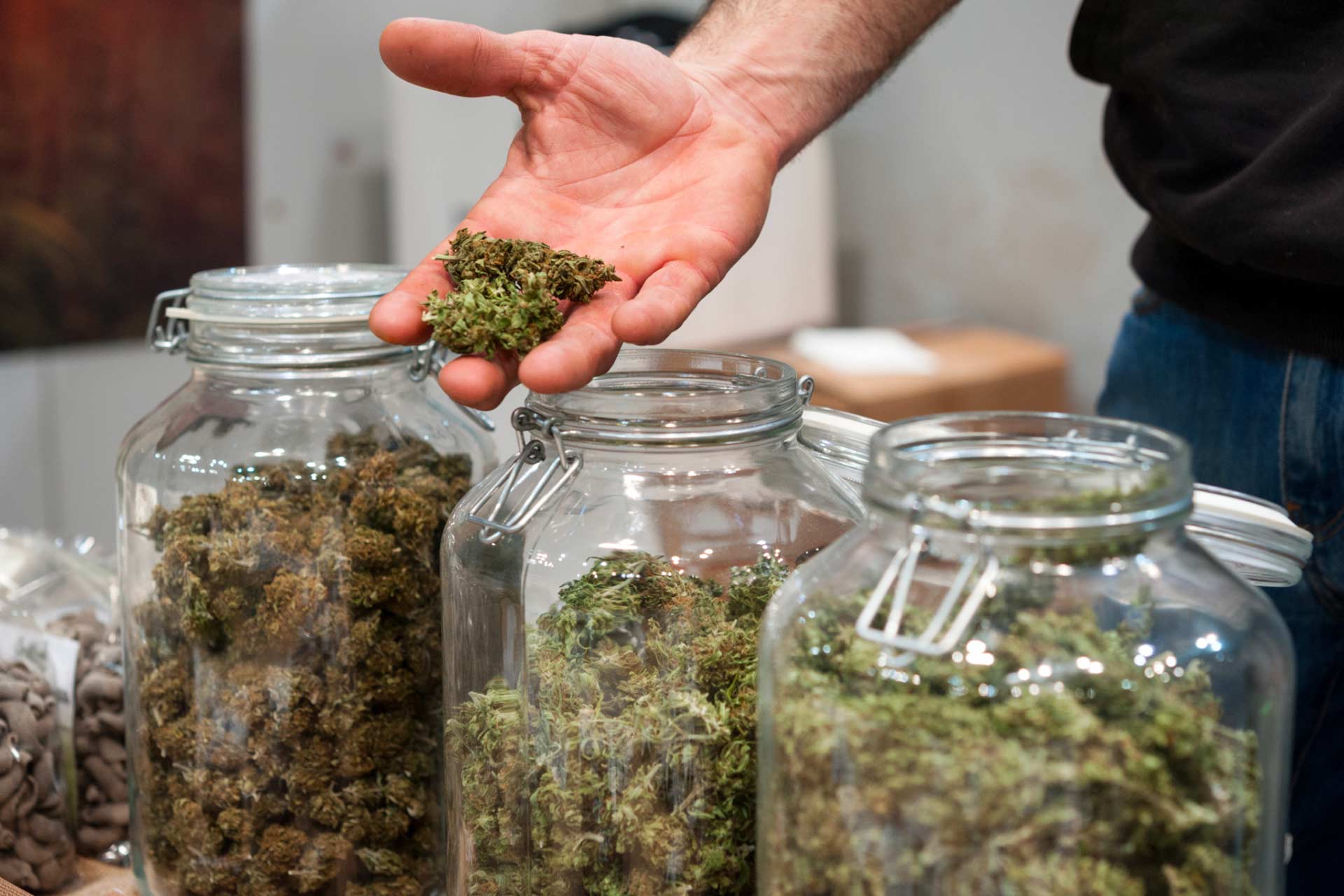
Cannabis Strains and Sleep: Untangling the Puzzle
What’s a cannabis strain (chemovar)? That question can be tricky, but it’s important to understand when shopping for cannabis. (Note: We use the terms “strain” and “chemovar” interchangeably, though chemovar is a scientifically more accurate representation of the compounds in the plant.)
Broadly speaking, cannabis strains are often sorted into one of three categories at the dispensary:
- Sativa: Provides an uplifting, energetic, creative high
- Indica: Provides calm and varying degrees of sedation
- Hybrid: Balanced effects
If you look at actual plant genetics, most of today’s legal cannabis is hybrid, combining the strongest genes from different plants to produce healthy flower. So why are these terms still used?
They continue to be used as a shorthand to describe the plant’s effects. In fact, those effects are mostly the result of other plant compounds—namely terpenes along with minor cannabinoids which give each strain its signature effect.
For example, our Supporting Member Seed & Smith offers two different flower strains, Midnite and White 99, with very similar THC potency levels. Based on that alone, you might expect both to have similar effects, but that’s not the case at all, in large part due to the different terpene profiles!

Midnite flower
Dominant Terpene: beta-Myrcene (sedating effect)
Subordinate Terpenes:
beta-Caryophyllene (stress relief)
Linalool (calming)
d-Limonene (stress relief but energizing)
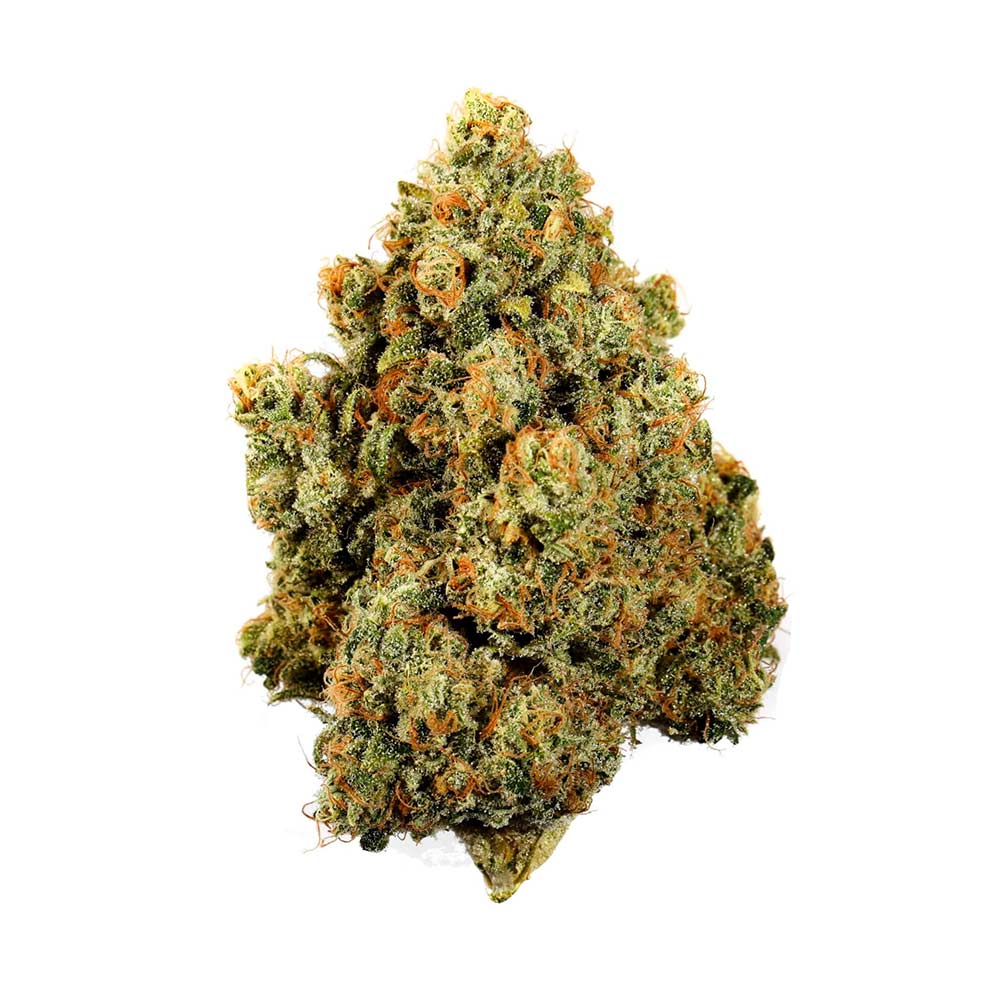
White 99 flower:
Dominant Terpene: d-Limonene (stress relief but energizing)
Subordinate Terpenes:
beta-Caryophyllene (stress relief)
beta-Myrcene (sedating)
Linalool (calming)
Which one of these strains—Midnite or White 99—would you choose for the best chance of a restful sleep?
Our Leaf411 nurses would suggest trying the Midnite flower due to the dominant terpene causing sedation. That potency range is quite high though, so a word of caution would also be given by our nurses to start with one inhalation first and assess if that is enough for your intention.
Cannabis Strains and Edibles
Some infused product manufacturers also create products that utilize plant compounds from specific strains, or which reference either Sativa or Indica type effects. You’ll see those listed on several of the products above.
Strains are also impacted by cultivation factors, including whether the plants are grown outdoors or indoors along with individual cultivation processes including lighting, fertilizers, etc. That’s why your friend in another legal state might rave about the Black Ice strain for sleep, yet the flower you bought in your own state doesn’t compare.
All this is to say that while you may think strains are the entire story, it’s often not the case. However, strains can provide clues for what to expect.
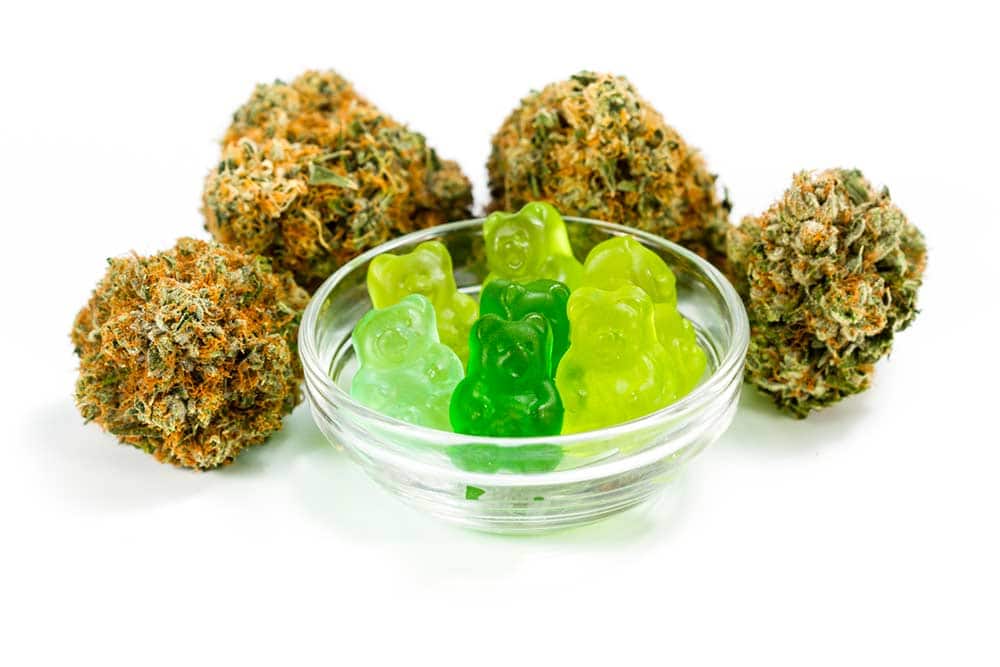
Smokable Versus Edible Cannabis for Sleep
An additional consideration when shopping for cannabis for sleep is the route of administration—how you want to use cannabis.
To some extent, it’s a matter of personal preference and also the type of insomnia you’re trying to treat, whether that involves having trouble falling asleep, staying asleep or both.
Smoking cannabis can be a responsible, safe method of administration in legal states; however, deep stigma remains around inhaling cannabis. Likewise, some people have concerns about the safety of vapes following the spike in vape-associated lung injuries last year, though the CDC traced most of those cases back to counterfeit or illicit vape cartridges containing Vitamin E acetate or other contaminants. In the face of the current pandemic, many people have also decided to stop smoking any substance, including cannabis, opting for edibles instead. And lastly, you may simply live in an apt, condo or shared housing where smoking is prohibited.
When you smoke or vape cannabis, the effects can be felt very rapidly, often within minutes. The intoxicating effects from smoking or vaping typically last between 2-4 hours.
From a sleep perspective, smoking or vaping may be beneficial for people who have a difficult time falling asleep. Inhalation may not fully meet your needs if you also have trouble staying asleep, though, since the effects will typically subside within the 4-hour mark.
Edibles including candies, tinctures and capsules typically have a longer onset—the amount of time it takes before you feel their effects. You can expect ingestion to take anywhere from 30 minutes to a couple of hours before you feel the effects, though those effects will last a lot longer—typically from 6-8 hours.
Edibles can be a good option if you have a tough time staying asleep throughout the night. However, you’ll want to make sure your schedule allows a full 8 hours of time for sleep.
A New Option on the Market: Quick-Acting Cannabis Edibles
Many manufacturers, including Quiq and Wana, are manufacturing new quick-acting edibles that take effect much more quickly, similar to inhaled products when it comes to timing. These new fast-acting products are a wonderful alternative to help with falling asleep. Remember, though, that what hits your body faster will also subside faster. Fast-acting ingestible products may take some trial and error before determining whether they’re better for early evening relaxation or insomnia.

The Leaf411 Mantra: Start Low and Go Slow (and Plan for a Full Night’s Sleep!)
If you’re using edible cannabis products, you’ll want to use the products 1-2 hours before bedtime instead of waiting until the moment you are climbing into bed. Timing your dose will allow you to relax before bedtime. Of course, it should go without saying, but don’t plan to drive while using any type of cannabis, because you never know how quickly the product will take effect.
Because everyone’s system is different, the minimum dose required for positive effects is also different—that’s why we always say to start low and go slow when trying a new cannabis product. How low? We suggest starting with 1/4 the suggested serving size on the package, or 1-2 mg of THC, whichever is lower.
If you’re smoking or vaping, this equals one inhalation at a time and waiting at least 15 minutes in between doses to assess your tolerance.
You may not feel anything at the lowest dose, but by starting low and going up slowly each night, you can build up your dose safely until you find the right amount that works for your body. When increasing by a milligram or less each night, you may still end up with a dose that makes you feel a bit too groggy in the morning or uncomfortable before falling asleep. If this happens, just go back to the dose that was comfortable and reassess after a few days. When using ingestible products (edibles and tinctures), it can take up to 2 hours for you to feel an effect, so allow plenty of time before increasing your dose.
Our Leaf411 nurses always guide our callers to safe use by cautioning about potential side effects from THC, which is dry mouth and an unsteady gait. We suggest keeping a glass of water at your bedside so there is no need to walk to the kitchen and risk falling when you feel the cannabis take effect. These precautions are very similar to those you’d take with any other sleep medications.
Get Your Cannabis Sleep Questions Answered During Our First Leaf Learning Series!
This Thursday, August 20, Leaf411 is launching our inaugural Leaf Learning Series: Get the 411 on Cannabis Therapeutics. Join us online from 4-7 p.m. MDT for a FREE beginner-friendly cannabis 101 presentation, followed by live Q & A with our own Co-Founder and CEO/ED Katherine Golden, RN, as well as Leaf411 Advisory Board member Dr. Dave Gordon from 4Pillars Health & Wellness. Sign up today at this link: https://hopin.to/events/leaf-learning
Many of our supporting members will be on-hand sharing information about their products and ready to answer your questions, including live Q&As with Medically Correct’s President Bob Eschino (maker of Quiq and incredibles); Stillwater Brands Ripple; and CAASI CBD’s Founder and CEO Lori Peck. Seed & Smith will host a virtual grow tour and Lightshade will also be providing a dispensary tour! You’ll also have the chance to meet one of Nature’s Gift Shop’s budtenders. We’ll also have a virtual expo hall with Wana, Ripple, Lightshade, Care by Design and Altus sharing information on their high-quality cannabis products.
Hop over to this link to reserve your spot: https://hopin.to/events/leaf-learning
Also, be sure to sign up for our newsletter below, so that you can be the first to learn about upcoming events!
Leaf411 Supporter Spotlight: Lori Peck, Founder and CEO of CAASI CBD
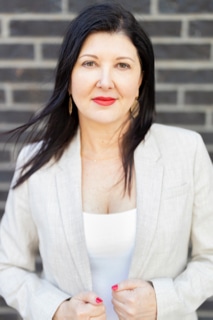

Medically reviewed by Katherine Golden, RN
Written by Denise Rustning
Leaf411 recently added our first supporting member from the State of Oregon—CAASI CBD!
While our vetting process is more virtual than in the past, we were impressed with CAASI founder and CEO Lori Peck’s story about why she started her company, as well her commitment to transparency throughout the manufacturing process.
(Just a reminder: Hemp-based CBD was made federally legal by the 2018 Farm Bill which allows it to be sold online and shipped to all 50 states. In order to meet the law, CBD hemp must contain less than 0.3% THC. This is such a small amount of THC that most people don’t feel any intoxicating effects from it.)
CAASI products contain CBD isolate, which doesn’t include any THC at all. Keep reading to learn more about Lori’s motivation for developing CAASI CBD, along with what makes her product different from CBD oils you might find at the grocery store.
Moving Past Stigma to Healing
Like many people, Peck was initially skeptical about anything related to cannabis.
“I bought into the stigma of cannabis. I didn’t know anything about it and hadn’t tried it since high school when I discovered that I’m very sensitive to THC,” Peck said.
A cancer diagnosis, along with several other life-changing events, inspired Peck to take a second look at CBD hemp’s potential to boost wellness. She found that it made a difference in her own life.
Based on her own experience, Peck was exploring the idea of putting together cannabis care kits for people who were fighting cancer. She began seeking out others who shared their expertise and discovered Hustle Hard: For Women Who Mean Business, a three-day intensive designed to launch female cannabis entrepreneurs. Hustle Hard has since grown into Females to the Front.
For Peck, the Hustle Hard event was transformative. “I was blown away by the amazing smart women that I met, including chemists, scientists, nurses and doctors working in the cannabis industry. Between my own experience using CBD hemp products and what I learned at Hustle Hard, I decided this was where I wanted to focus—developing clean, plant-based products that contain as few ingredients as possible,” she said.
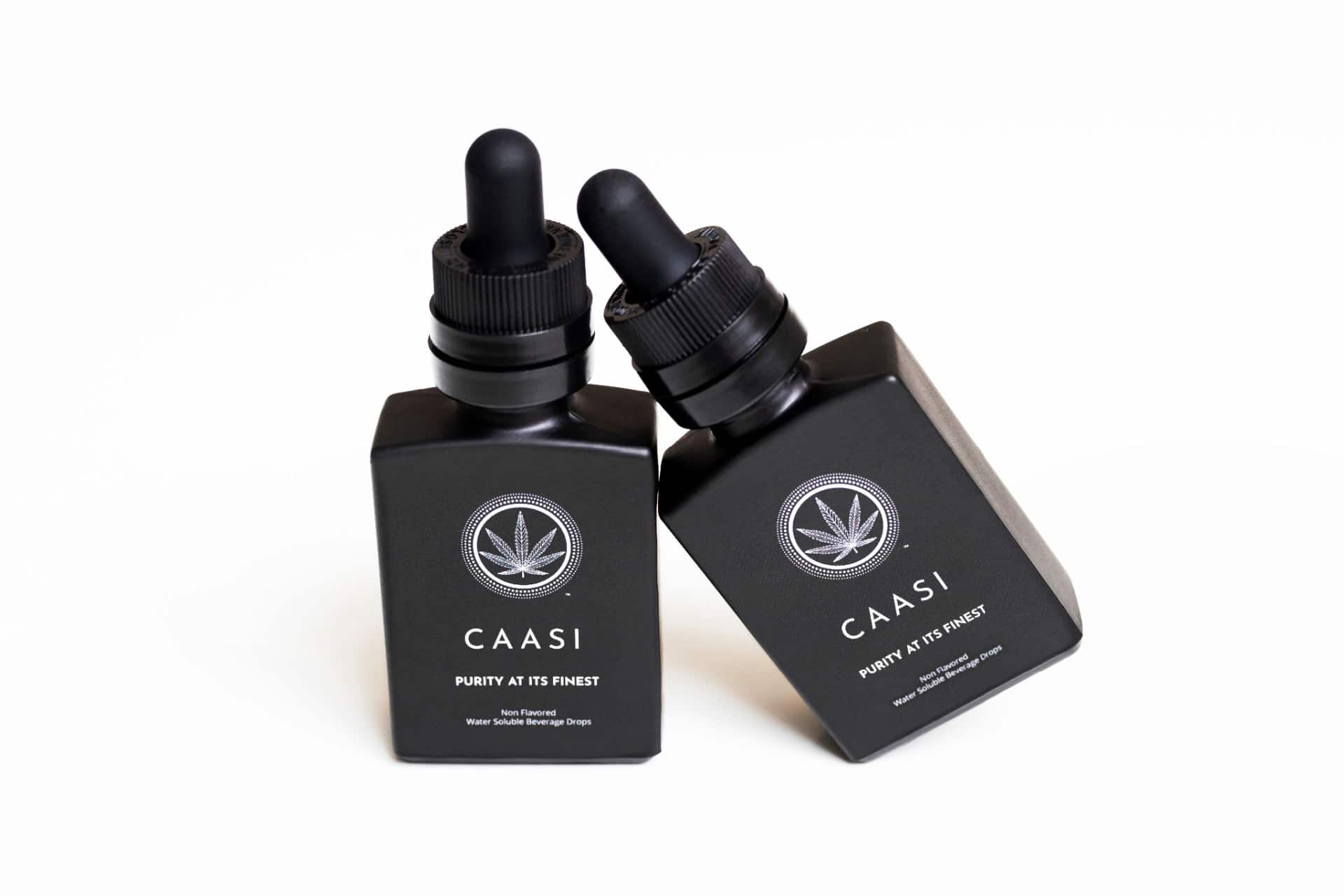
Pivoting into Purpose-Driven Work
Peck majored in fashion design and spent years in corporate retail before launching CAASI.
“It was not my lifelong dream to be in corporate retail, but I gained a lot of experience on how to run a business. At the same time, my work lacked purpose. People don’t need new t-shirts all the time,” Peck said.
“Now, I’m doing work that I love, proving something that will be helpful for people,” she said.
Sourcing the Best CBD Available
Not all CBD is the same. That cheap bottle of CBD you find in the convenience store may only contain a fraction of the promised CBD, or it may have been manufactured using low-quality hemp.
Honest, high-quality CBD companies, on the other hand, are committed to sourcing hemp that utilizes industry best practices. They are also transparent, describing their processes and providing Certificates of Analysis (COAs) showing the results of third-party testing. CAASI is a prime example of a company doing CBD the right way.
“We start with hemp from Horn Creek Farm in Southern Oregon, where you’ll find some of the richest soil in the state,” Peck said. “They’re not FDA certified organic, but they use organic farming practices. They are just really good people.”
Sonically-Vibrated CBD to Improve Absorption
The hemp flower that Peck sources from Horn Creek Farm then goes to Scientia Labs for extraction. Transparency and scientific rigor are both central to Scientia Lab’s work.
“Scientia Labs isolates the CBD from the hemp. The CBD is broken down into a powder, and then that powder is mixed with organic MCT oils and just a few other ingredients,” Peck explained. “The challenge is that when you have oils, they don’t easily mix with liquids. That’s where the sonic vibration process makes a difference. When the product is sonically vibrated, it breaks the liquid down into nanoparticles that more readily mix with liquids, and which can be absorbed into your system much easier.”
This process also results in a product that lacks the bitterness of many CBD isolates.
Peck said, “A lot of isolates can tend to leave a bitter taste in your mouth, but the CAASI CBD drops mild enough that you can even use them in water. They’re also very versatile, since they’re unflavored.”
Partnering with Leaf411 on Education You Can Trust
“At CAASI, we recognize that education is important, especially for people who are new to CBD. We do our best to align ourselves with experts like Leaf411 who are really knowledgeable and have the professional background to answer questions about medication interactions, for example,” Peck said. “It also provides credibility for us to be able to say we’ve completed your vetting process and meet the standards for a product that a clinical professional might suggest.”
Check Out CAASI at Our Upcoming Leaf411 Learning Series Launch!
CAASI will be joining the upcoming Leaf411 Learning Series Launch on August 20, 2020, as one of the vendors in our virtual expo hall. Stop by the booth to say hello and learn more about how CAASI’s CBD drops are different. Sign up for our our Learning Series at this link: https://hopin.to/events/leaf-learning
CAASI will also be featured in an upcoming MJ Lifestyle VIP Plant Wellness Subscription Box, and will soon be available in select retail locations in the Portland, Oregon, area. Remember that you can also order trial size or full size products directly from their website.
Helping You Find CBD Products and Information You Can Trust
At Leaf411, our commitment is to you—the public. Whether you’re looking for CBD products you can trust, or medically-sound information on CBD, we can help. Call our anonymous nurse-staffed hotline for free at 844-LEAF411 (844-532-3411) or chat us from our homepage during hotline hours.
Also, we encourage you to subscribe to our newsletter so that you can be the first to learn about our upcoming initiatives. Sign up below!
Leaf411 Affordability Program Q&A
Medically reviewed by Katherine Golden, RN
Written by Denise Rustning
Leaf411’s new Affordability Program was created to help offset financial challenges many people face when accessing legal cannabis or CBD hemp products.
We know you have questions about the program. Below, we’re sharing some answers to questions we commonly hear. Keep reading to learn more about the program and how to apply.
What does the Affordability Program provide?
The Affordability Program features two components:
- Working with manufacturers and dispensaries to offer low-cost CBD hemp and marijuana products to qualifying patients. Manufacturers are often eager to share deeply discounted or donated products that might otherwise go unused or be discarded due to product expiration.
- Creating scholarships to reduce costs associated with medical marijuana card evaluations, with a priority placed on pediatric evaluations. The State of Colorado requires pediatric patients to undergo two independent provider evaluations for a medical card. This means most parents need to drive to two different clinics, take time off for two different appointments which doubles the cost for their families.
Do I need to live in Colorado to participate?
Initially, the Leaf411 Affordability Program will be limited to Colorado residents and cannabis businesses, with future plans to extend it to other states that have legal cannabis in place. Why is that? Individual states have unique restrictions and regulations. As we expand, we want to make sure our Affordability Program remains compliant with all state and local laws.
Note: CBD hemp is federally legal and can be legally shipped across state lines. We invite CBD hemp retailers to contact us if you’re interested in participating in Leaf411’s Affordability program either in your own state or at the national level.
What are the income eligibility criteria? Do you take into account extenuating circumstances like recent job loss?
We use a means test to determine eligibility, which is why we ask for your gross monthly income. Our means test is based on guidelines that you’re likely familiar with, including Medicare/Medicaid, TANF and SSI.
However, we realize that your monthly income may not be the full story. For many people, the pandemic has resulted in either reduction in pay or outright job loss. Other people are finding themselves stretching their dollars even further as they provide extra support to family or friends.
The bottom line for us that we don’t want cost to be a barrier to accessing CBD hemp or cannabis for health concerns. If you’re not certain whether you’ll qualify, reach out to us and let us know your specific circumstances and we’ll do all we can to help.
Can I apply on behalf of my child or someone else?
Yes. Parents and legal guardians are able to apply for pediatric patients and disabled adults if unable to do so themselves.
Can I apply on behalf of my pet?
We love our four-legged friends at Leaf411, and have even seen firsthand the power that CBD has in improving our pets’ quality of life! However, our Affordability Program’s focus is only on people, not pets, at this time.
Do I need to already have experience using CBD hemp or marijuana to qualify?
No, you do not need any past experience with CBD hemp or marijuana to participate in our Affordability Program. In fact, our Leaf411 nurses can help you determine the best place to start in conjunction with the Affordability Program–for instance, if you’re wondering whether you need a medical marijuana card, or if you have questions about CBD hemp versus marijuana bought at a dispensary. Call us for free at 844-LEAF411 (844-532-3411) or chat us from the Leaf411.org homepage during hotline hours with your questions.
Where can I find the application?
You’ll find the application at the “Apply Now” button on the bottom of our Affordability Program page, below the logos of our program partners and sponsors.
The application form seems intimidating. Will I have to supply all of my medical records to you?
No, we do not require you to submit medical records or disclose detailed health information. However, we know that some participants may voluntarily share sensitive health information with us which may be shared on a need-to-know basis within the program staff.
What steps are you taking to keep my information secure?
Your information will never be shared outside of Leaf411’s organization and all applications are kept in an online file within the organization’s operating system.
How do I find out if I qualified?
After you apply, you’ll receive an email within about 48 hours letting you know if your application was approved or denied.
Once I qualify, then what happens?
Approved applicants will receive an email letting them know they have been accepted into the Affordability Program. They will then start receiving notifications via email and have access to a private patient portal page on the Leaf411 website that will detail discounted medicine and products, services and other information for participants.
How long am I part of the program?
You are enrolled in the program on an annual basis, and will need to reapply each year if you wish to continue.
What happens if I don’t qualify? Can I appeal or request more information about the decision?
Our goal is to improve access to CBD hemp and marijuana for patients who otherwise might not be able to afford it. We’ve put safeguards in place to ensure we reach as many people in need as possible, while also protecting the program from abuse that could quickly deplete our resources.
We will always reach out to you to answer questions if your application is denied. We understand that in some cases, misunderstandings about the application process may play a role, or that technology issues, language barriers or other circumstances may be an issue as well. Our goal is to help you, whether that’s through the Affordability Program, education or other resources.
Can the med card scholarships be used at any provider offering MMJ evaluations?
The med card scholarships can only be used at providers who give discounts through Leaf 411’s Affordability Program. You’ll receive a list of those providers after qualifying for the program.
What CBD hemp and marijuana companies are participating?
You can find a list of participating industry partners at the bottom of our Affordability Program page on our website. Once you qualify for the program, you’ll receive updated information about specific products available, as well as where to purchase them.
I still have more questions. Who can I contact?
Amy Dawn Bourlon-Hilterbran, Affordability Program Chair, can help with any questions you have about the Affordability Program, whether you’re a patient or potential industry partner.
For other questions, use our Contact Page to get in touch.
